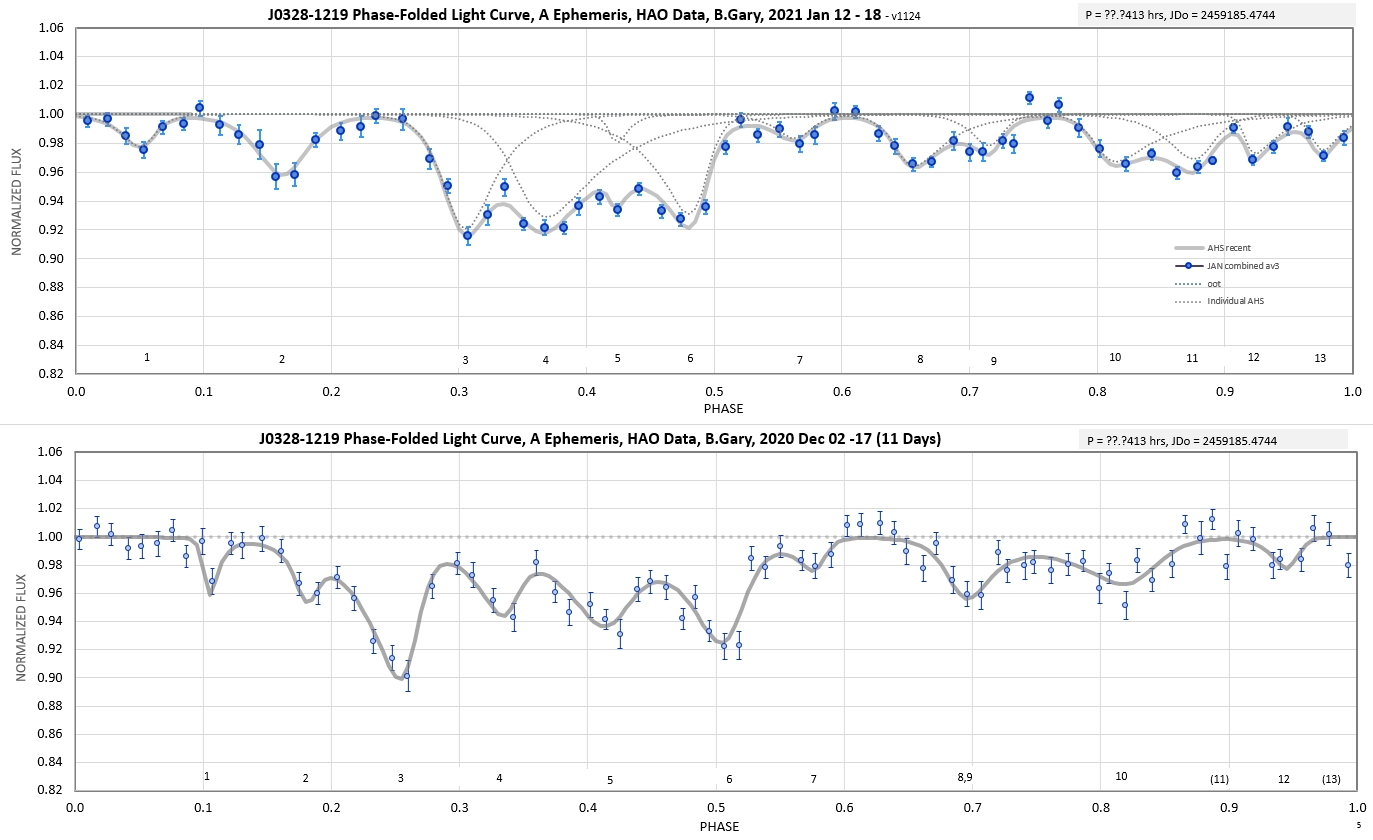
Figure 3. Combining LCs for early December (6 nights) and early January (5 nights), showing 10 dips in both data sets plus one dip that is present in only the December data (Dip 3).
This web page is meant to be an archive of my light curve observations for "Observing Season #1" of white dwarf J0328 using the HAO backyard observatory 16" Ritchey-Chretien AstroTech telescope with a SBIG XME-10 CCD, unfiltered (link). Most of my web pages are meant for documenting observations and analysis results for myself (it's easier than using a filing cabinet). My web pages can sometimes serve to help with collaborations when I join with others to study the same star. My Web Site #2 is located at http://www.brucegary.net/J0328-2/; it includes my observations during the second observing season, starting on 2021.11.28.
Status Summary
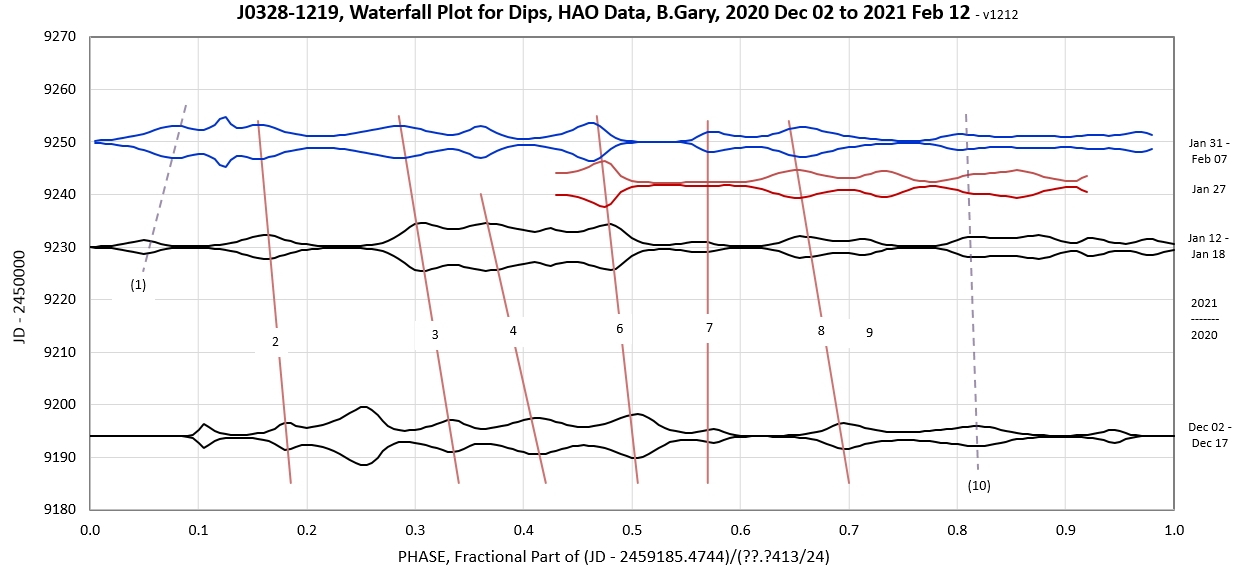
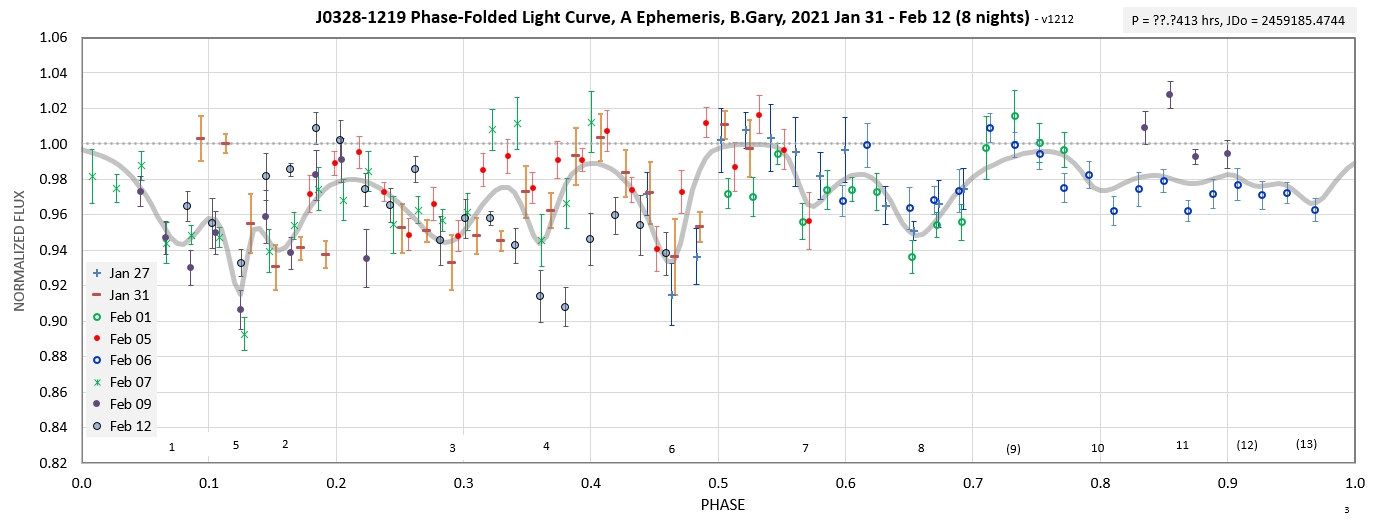

Figure 3. Combining LCs for
early December (6 nights) and early January (5 nights),
showing 10 dips in both data sets plus one dip that is present
in only the December data (Dip 3).
RA/DE = 03:28:33.5 -12:19:45, r'-mag ~
16.6, white dwarf type DZ, T_eff = 8750 (170) K (Guidry et
al., 2020). Observing season is centered on Nov 18 (Aug 01
to Mar 05).
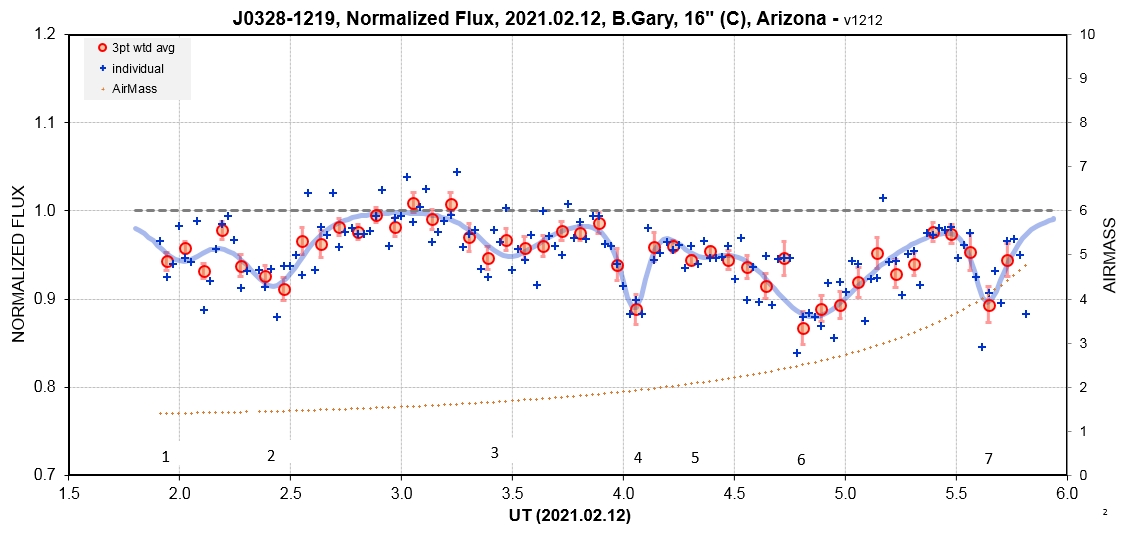
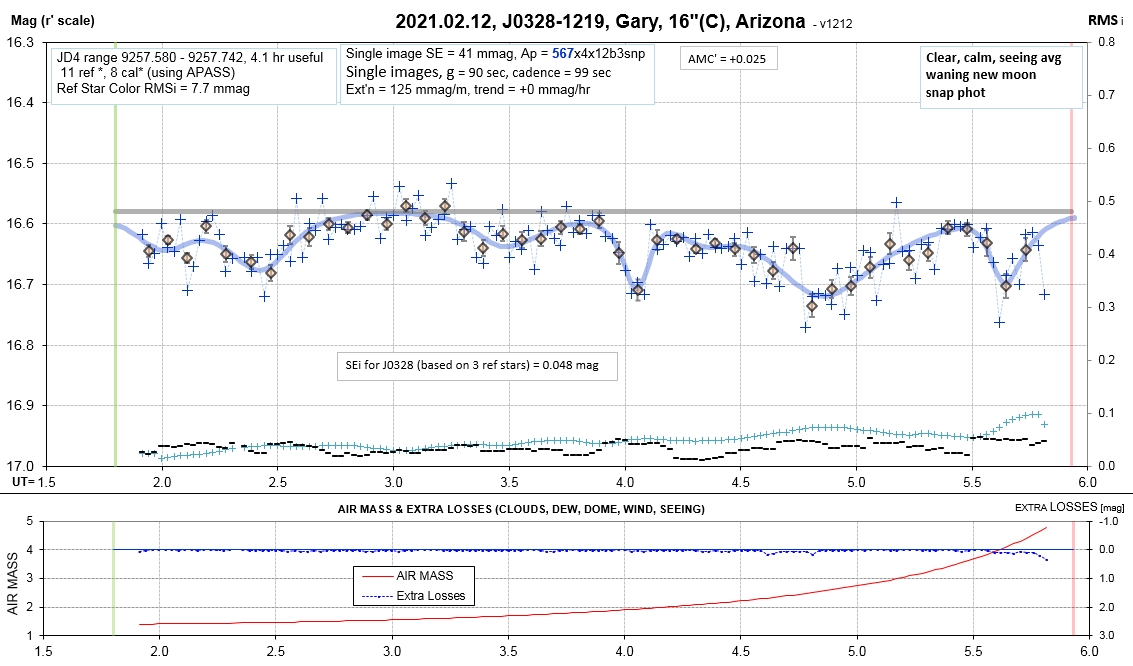
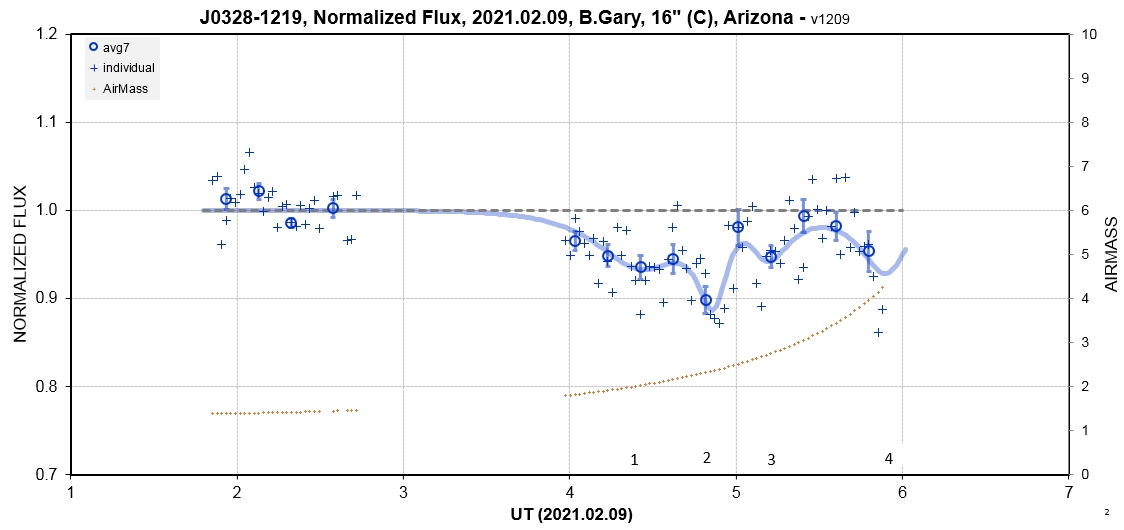
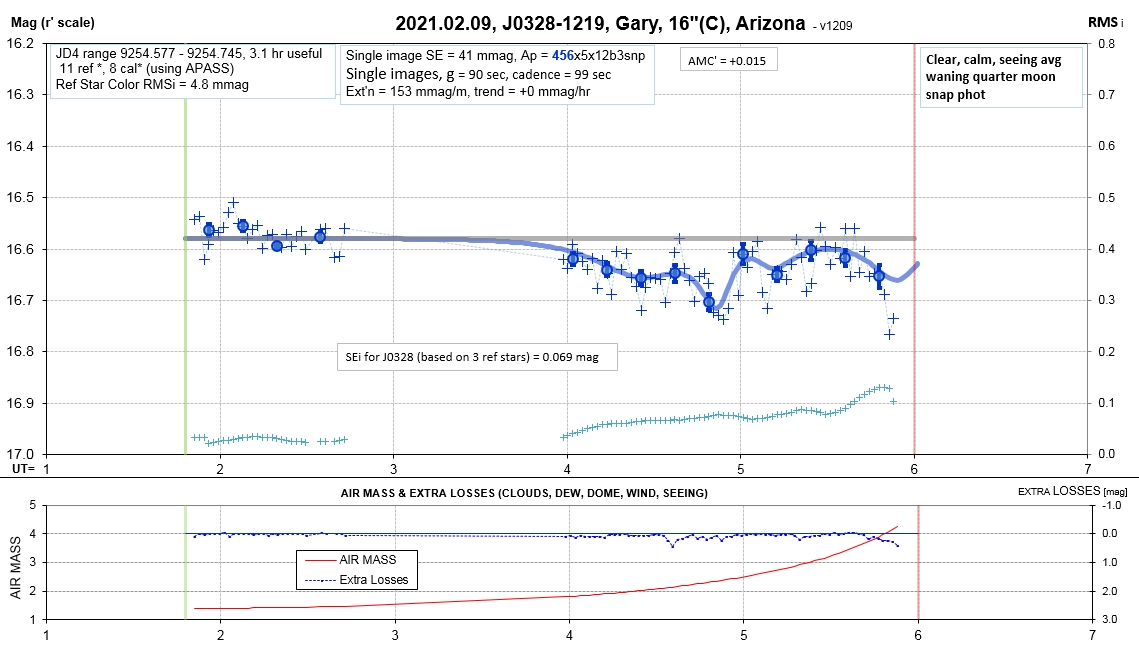
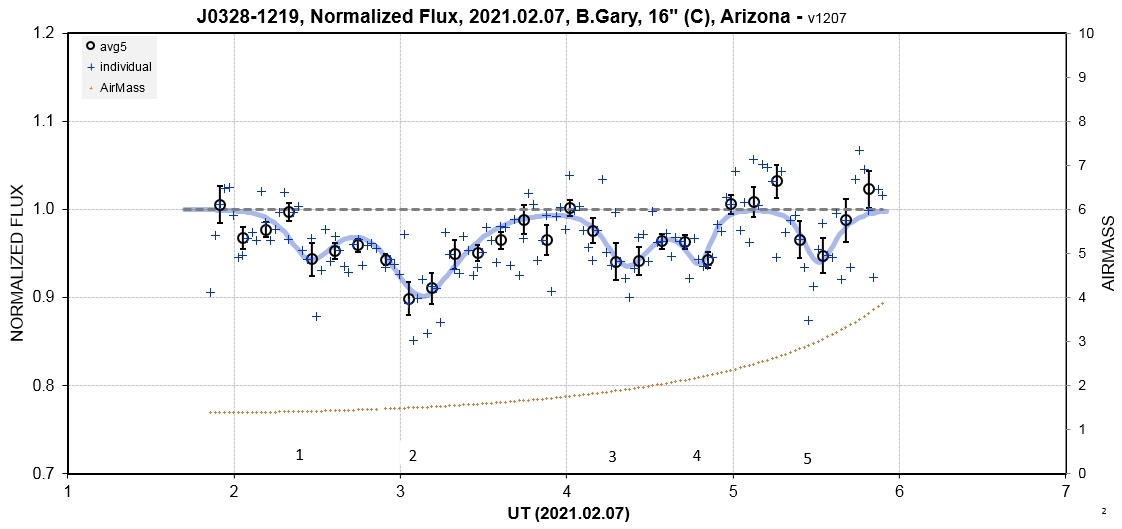
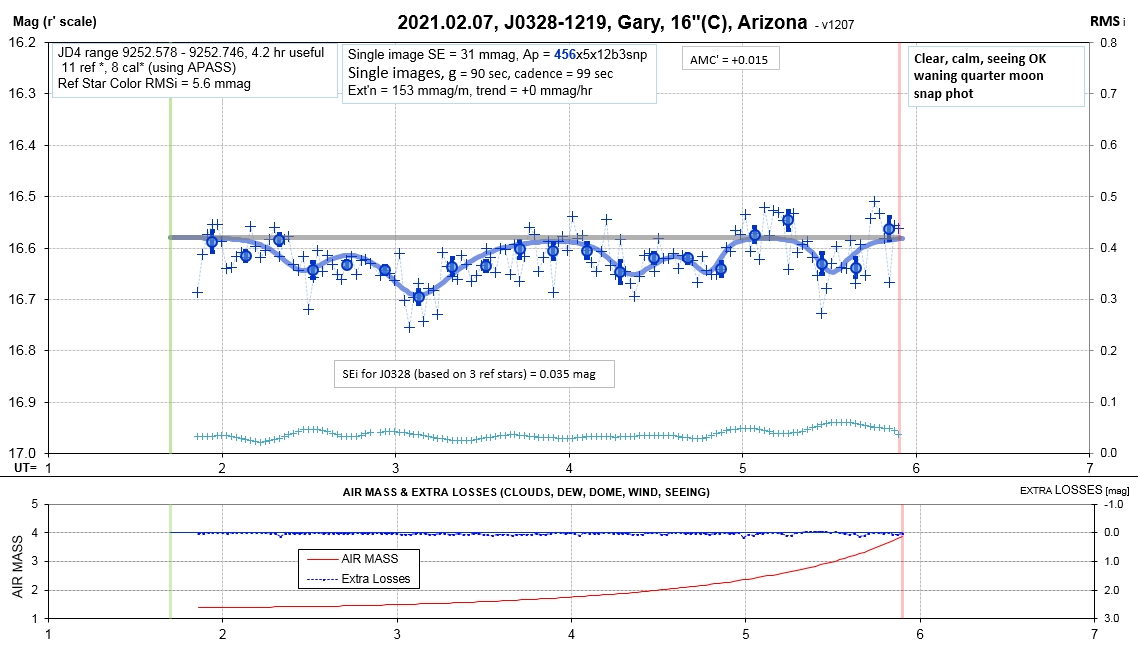
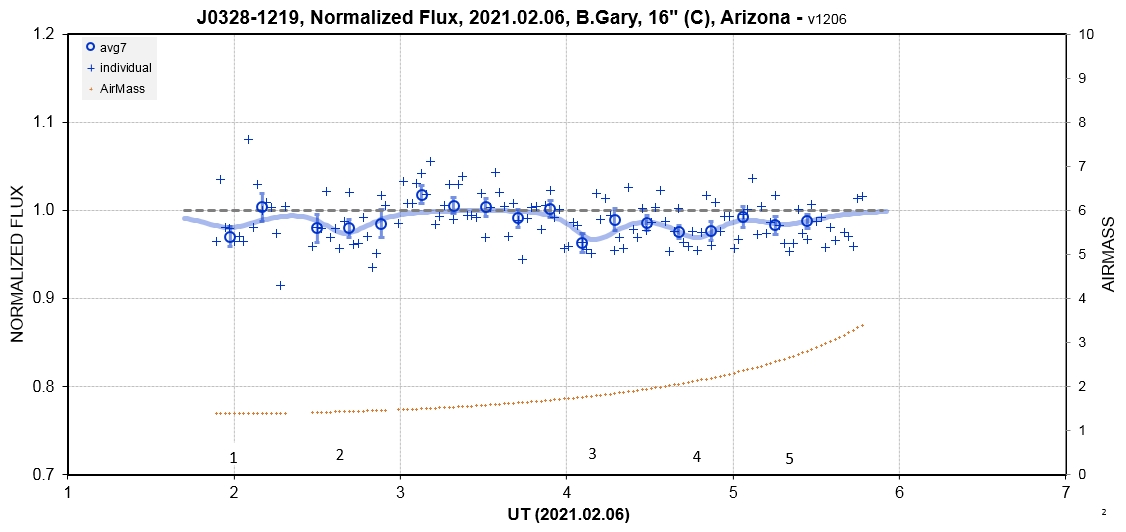
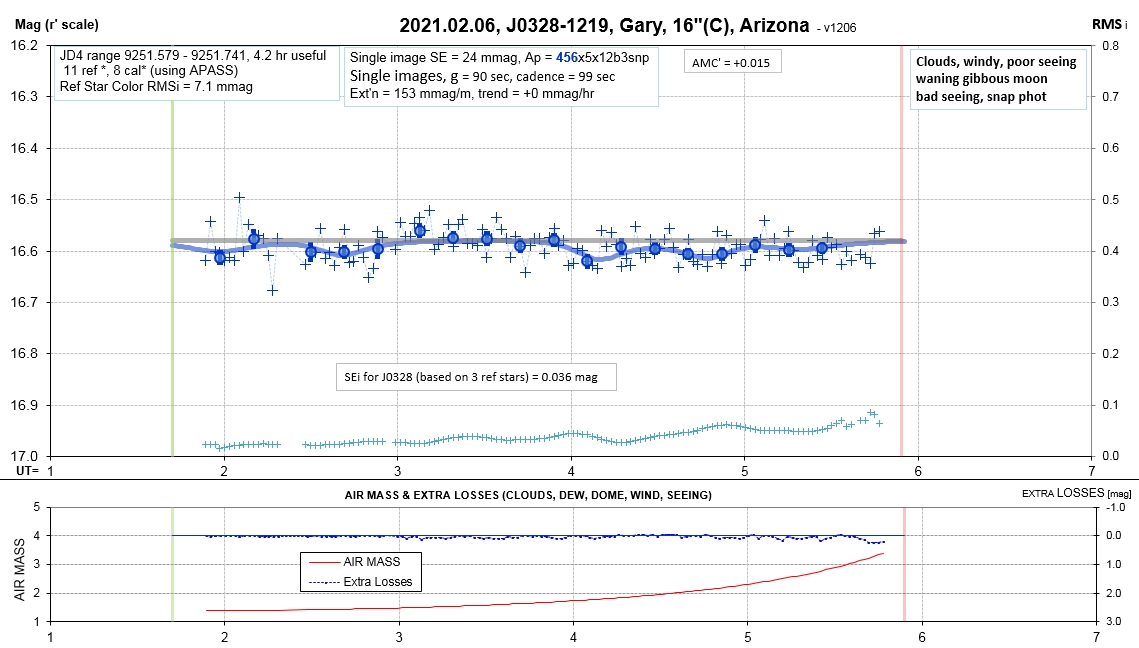
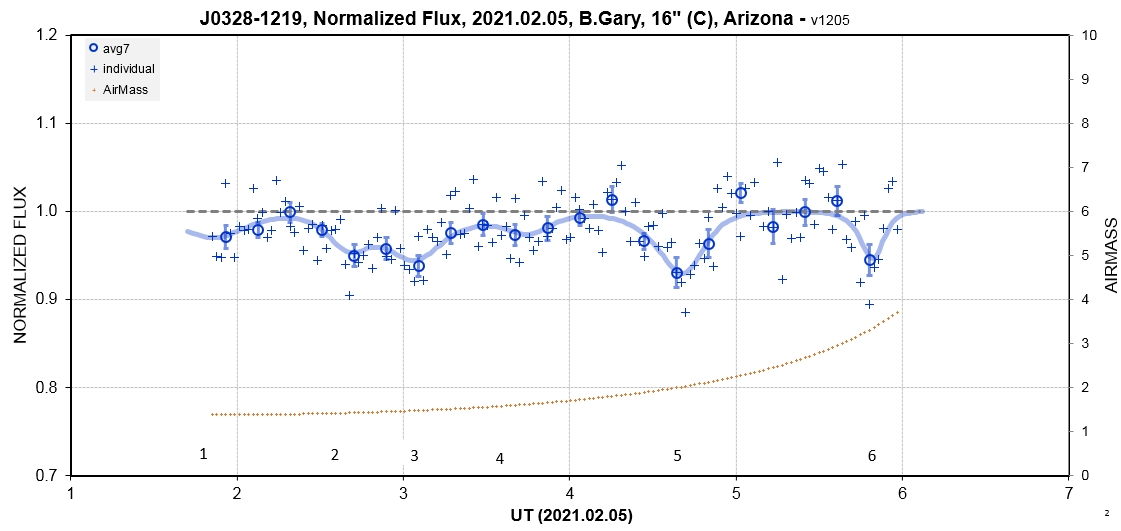
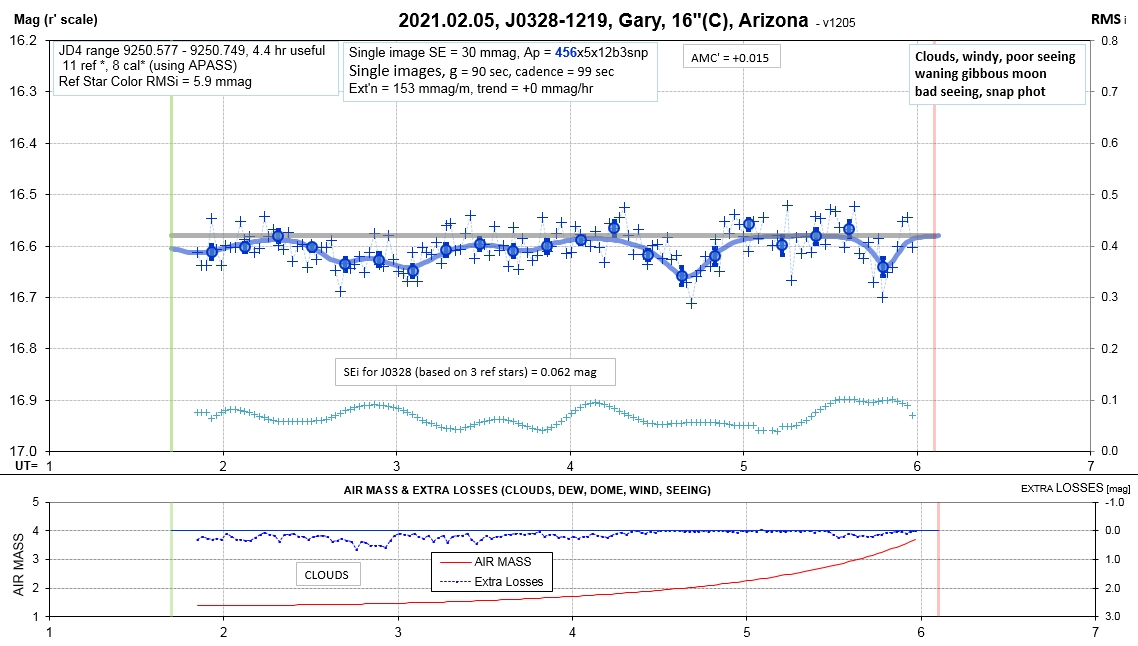
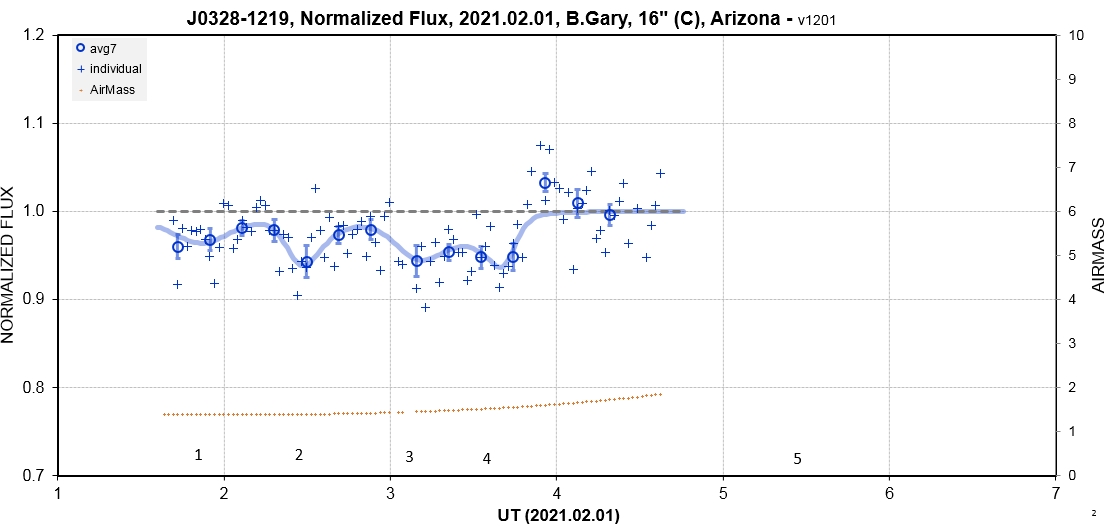
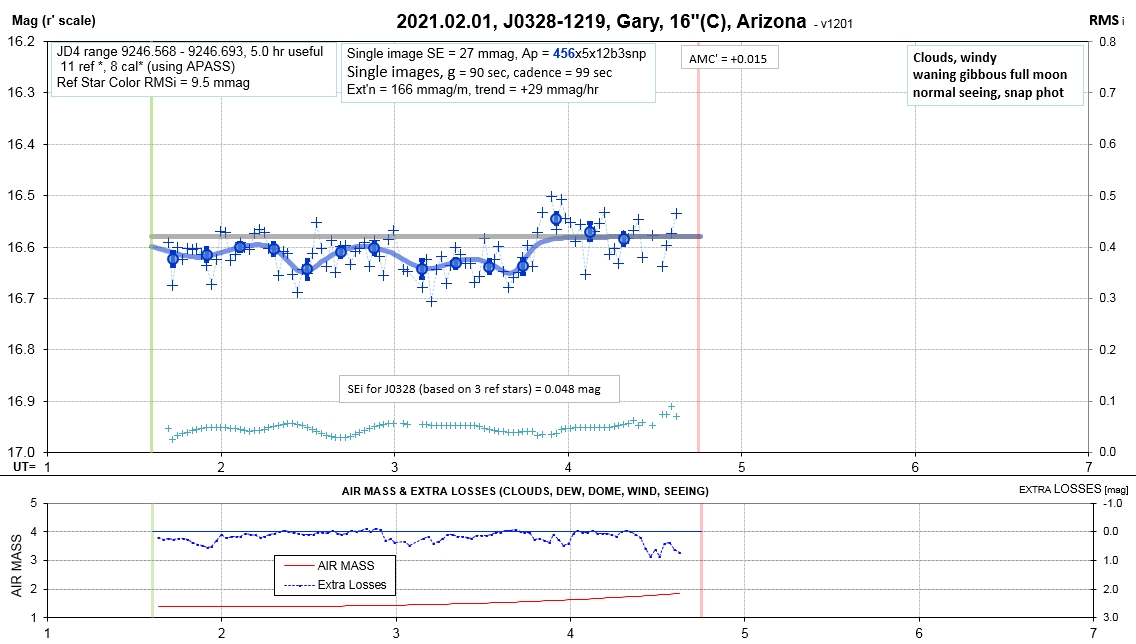
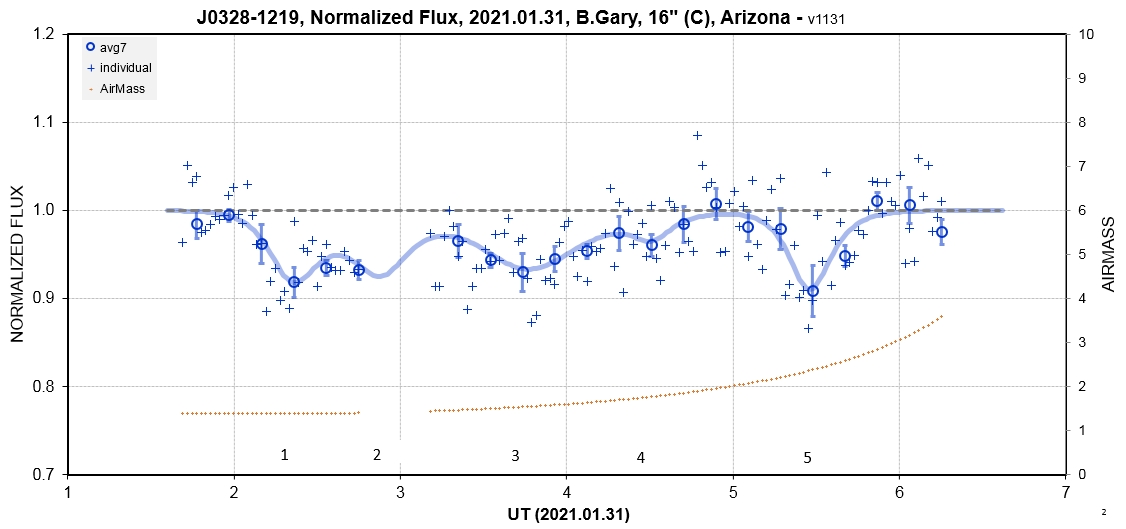
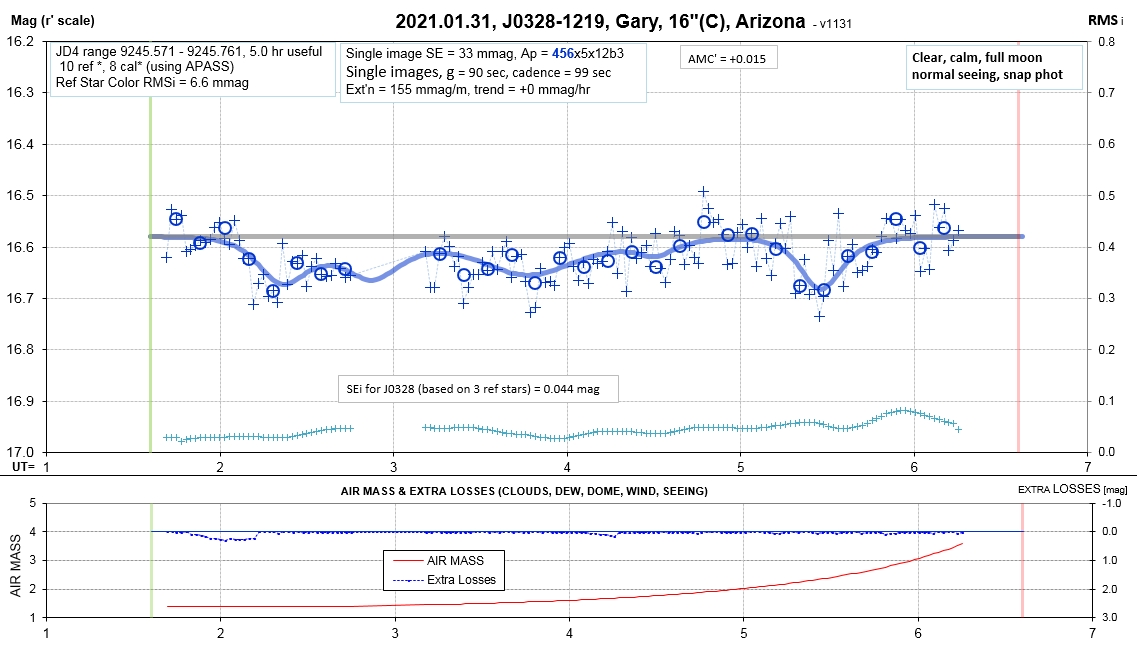
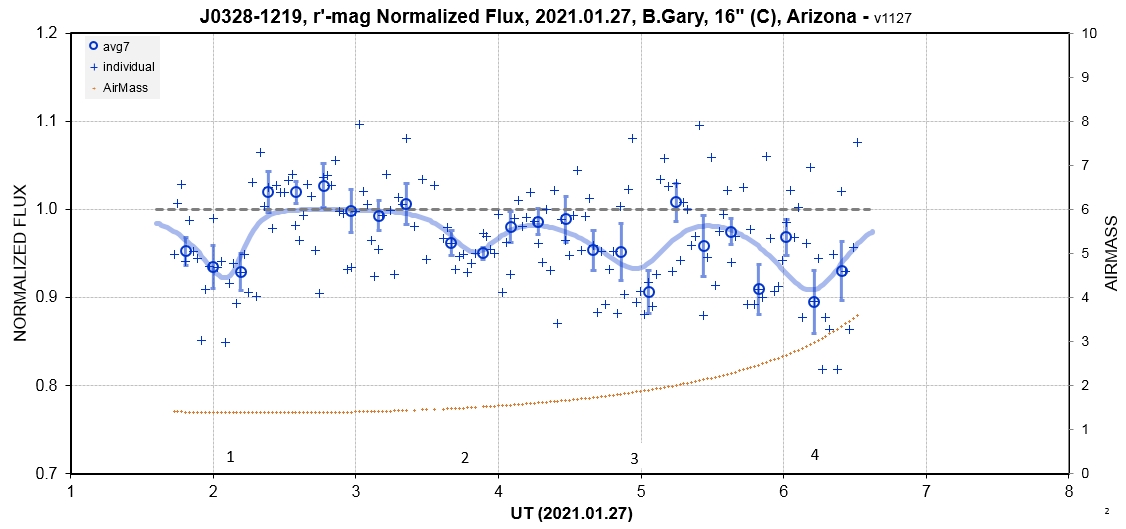
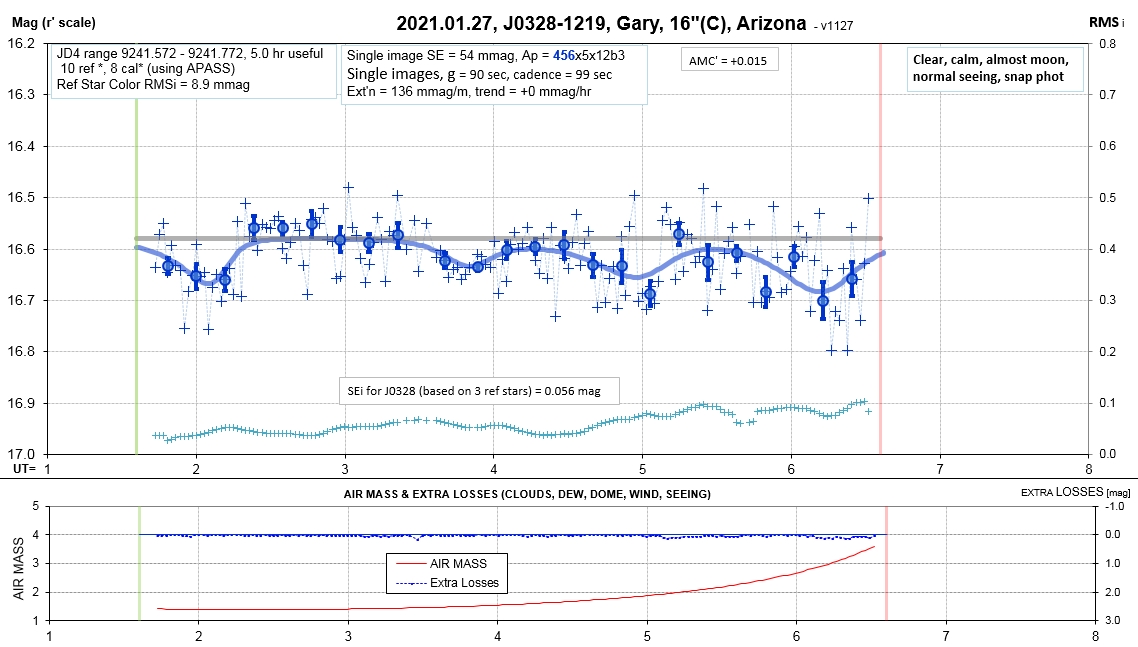
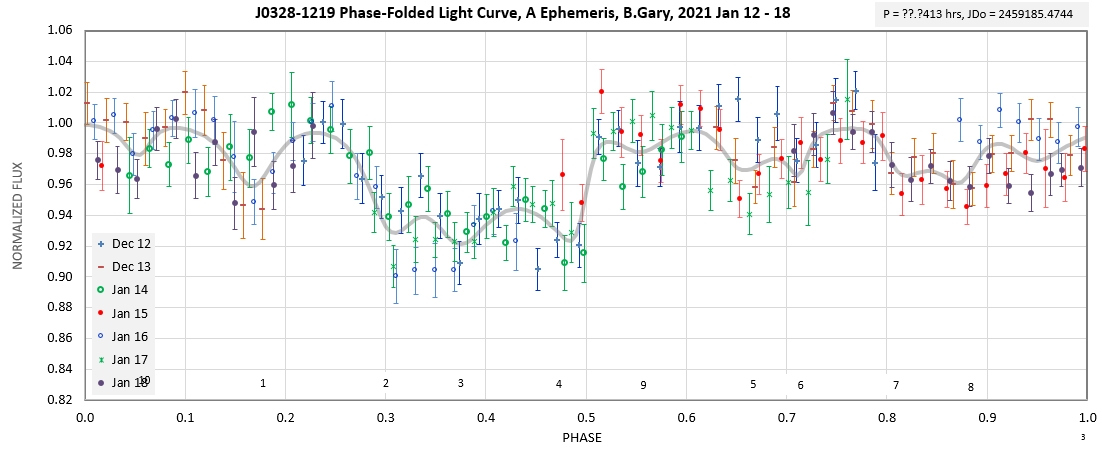
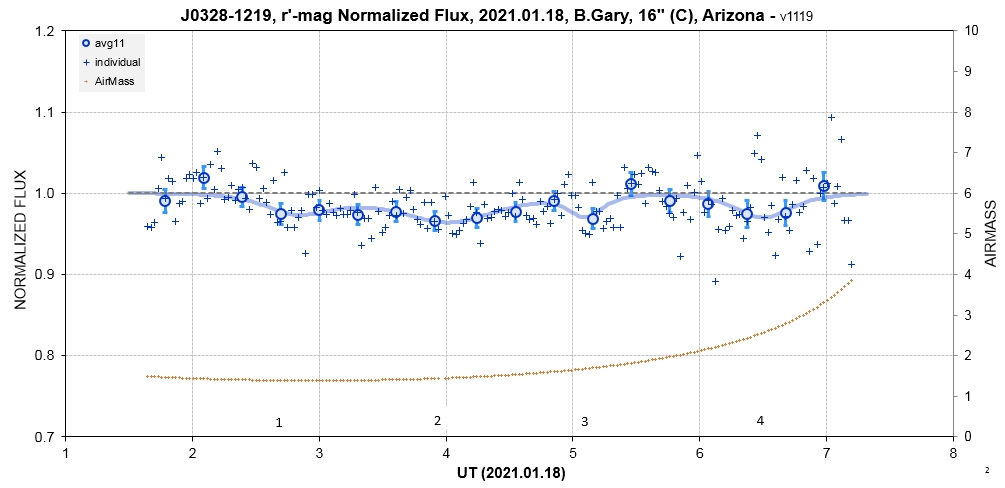
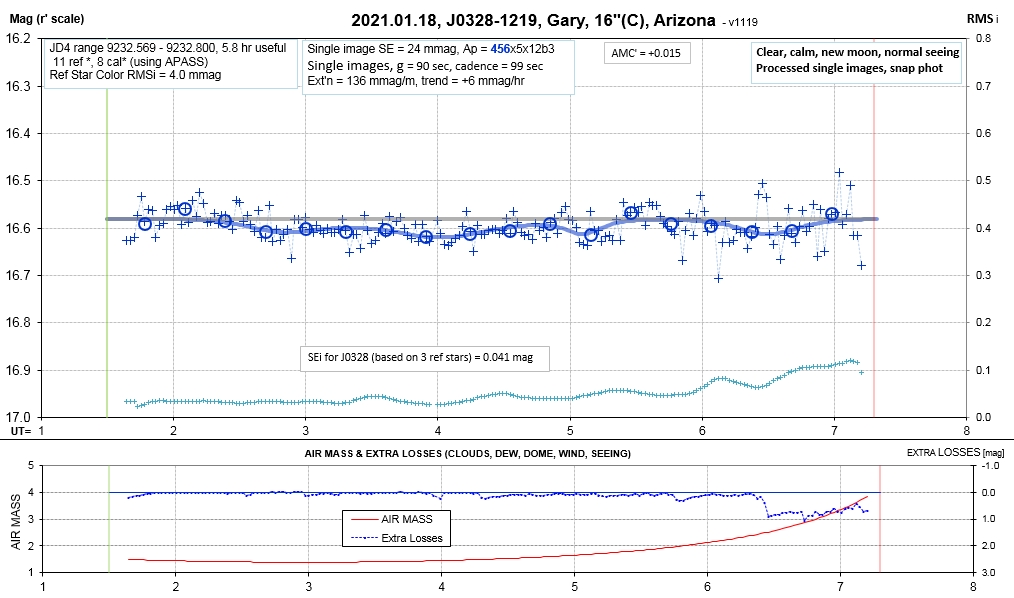
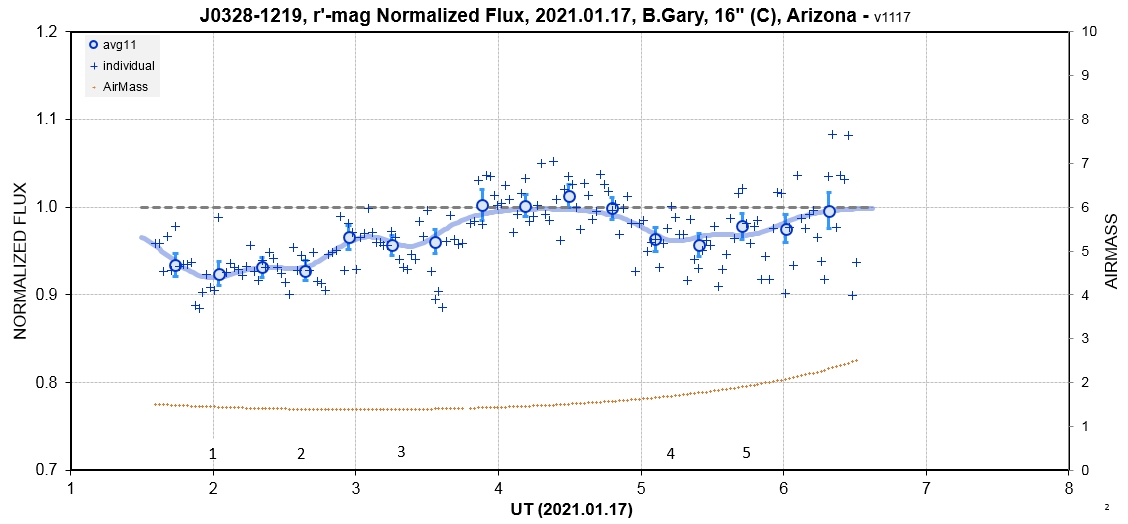
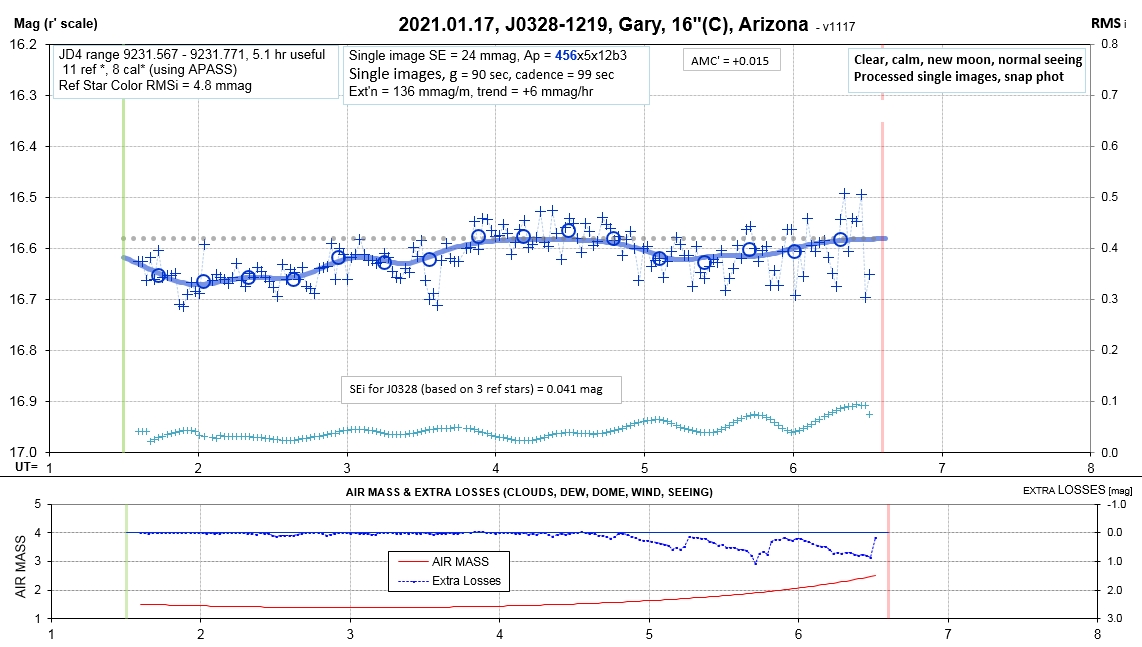
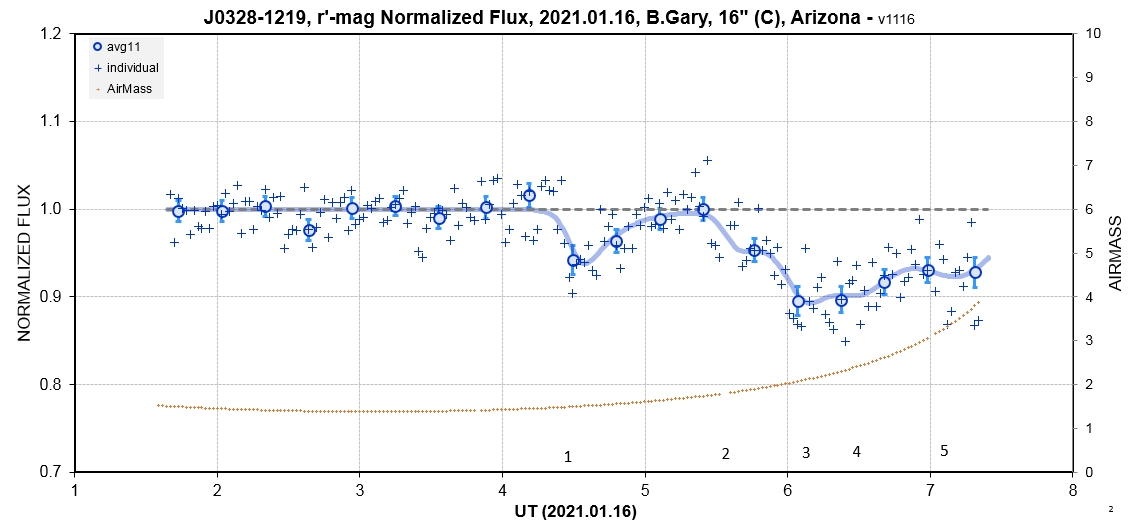
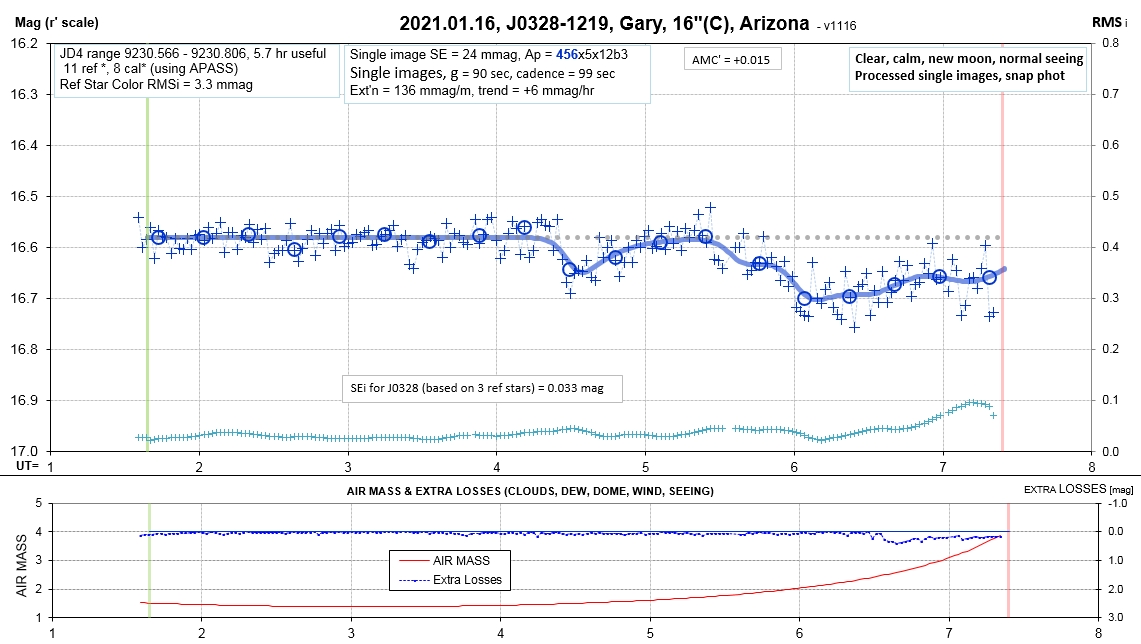
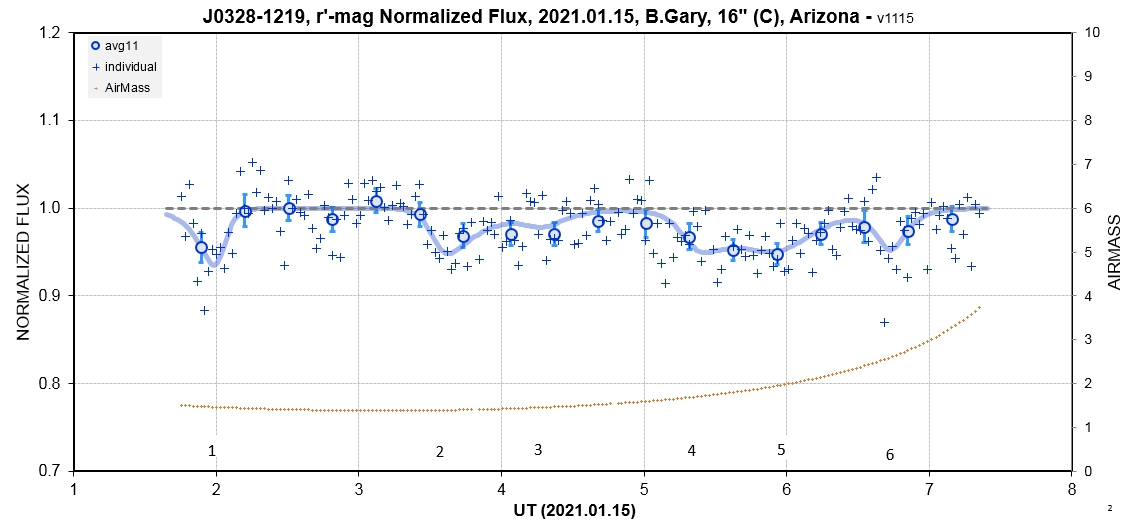
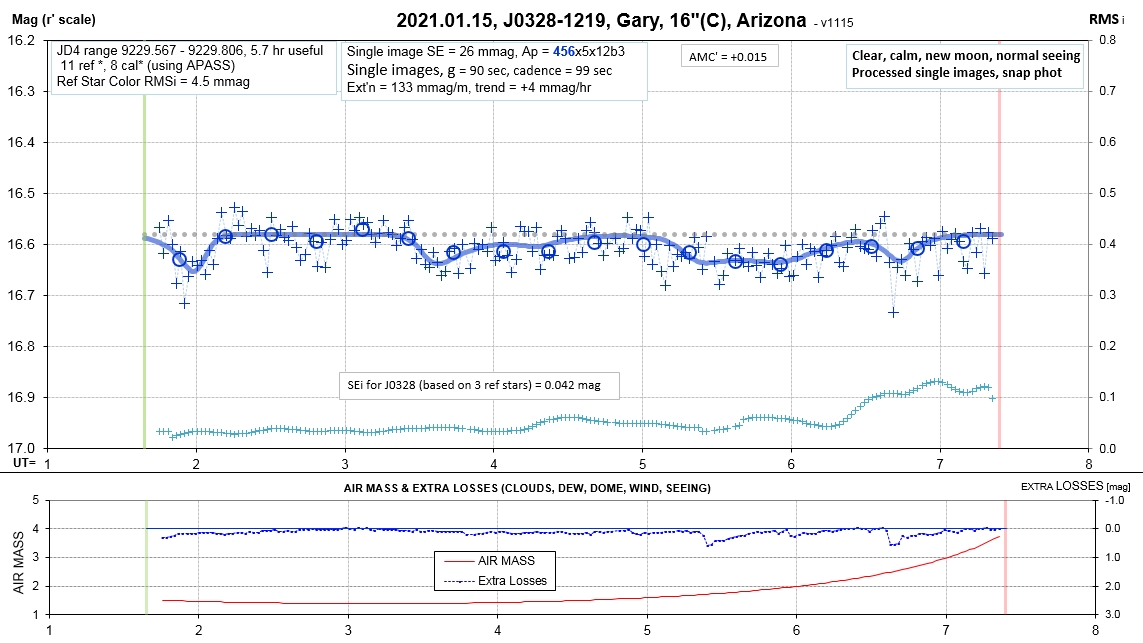
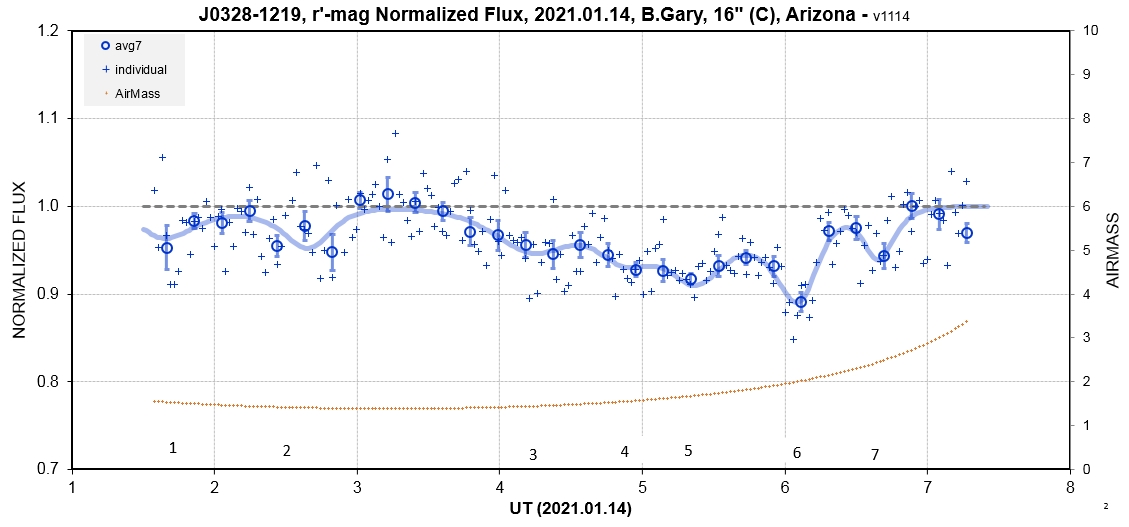
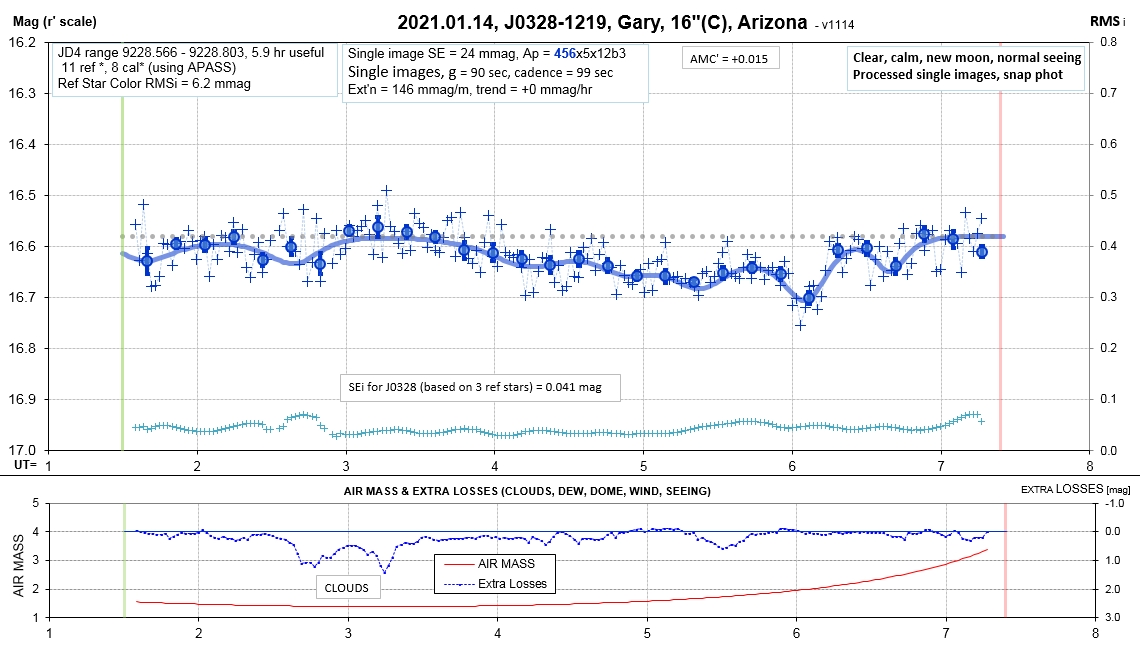
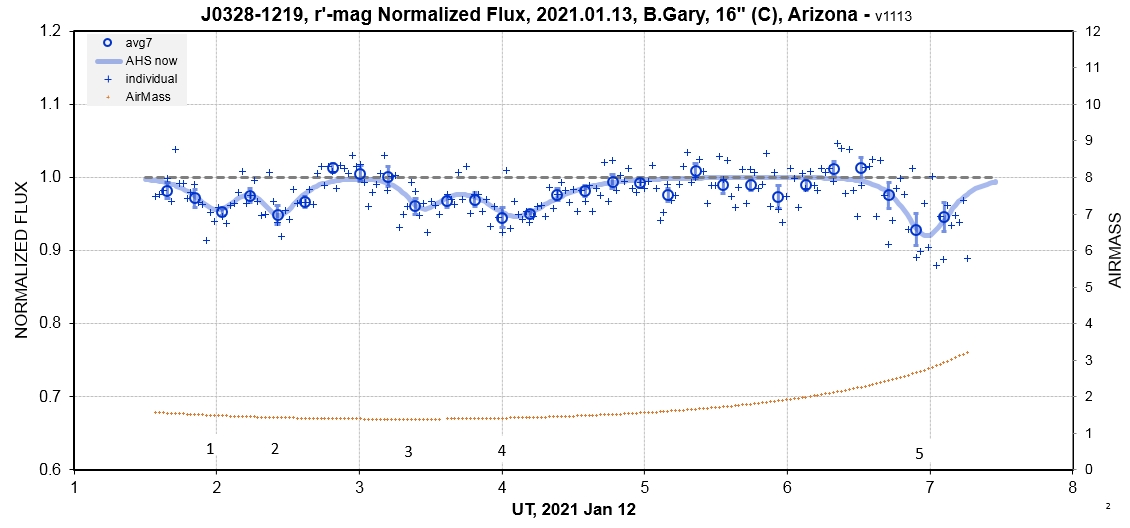

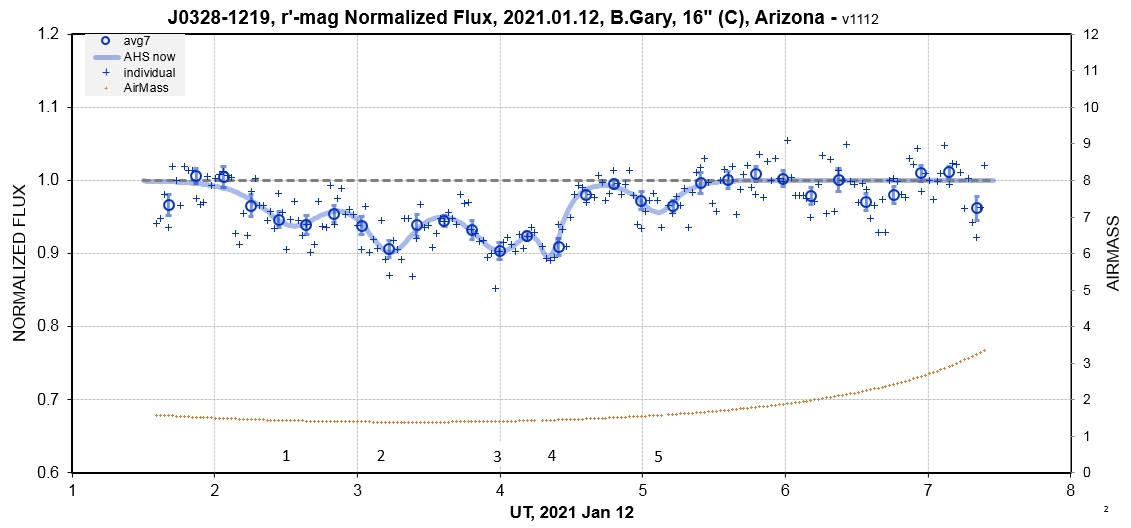
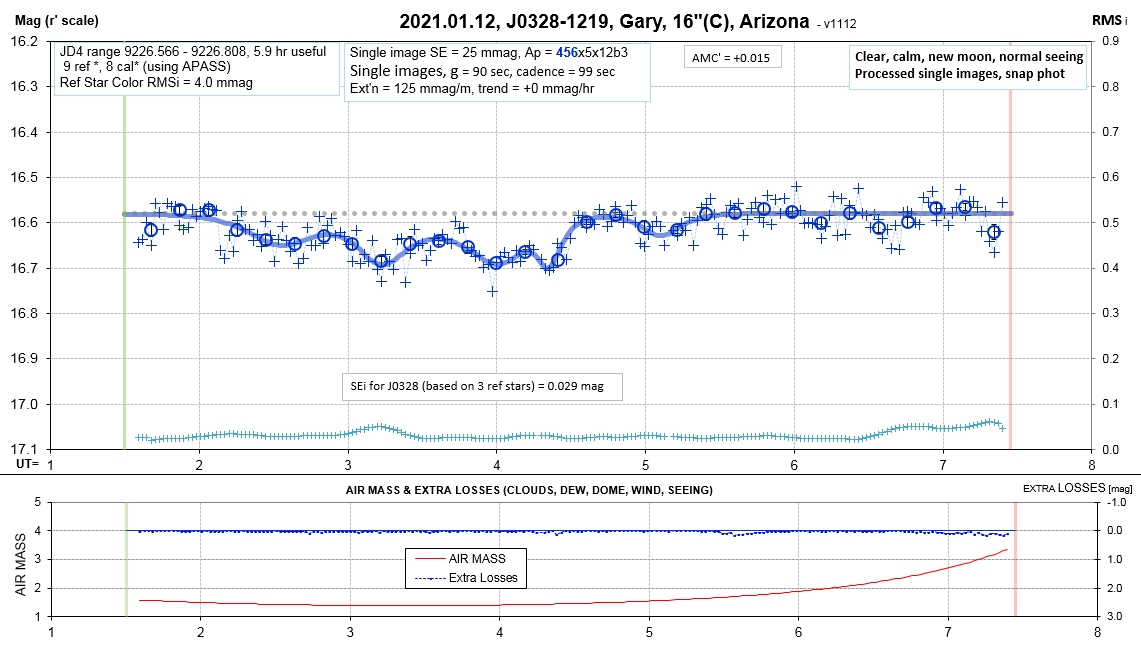
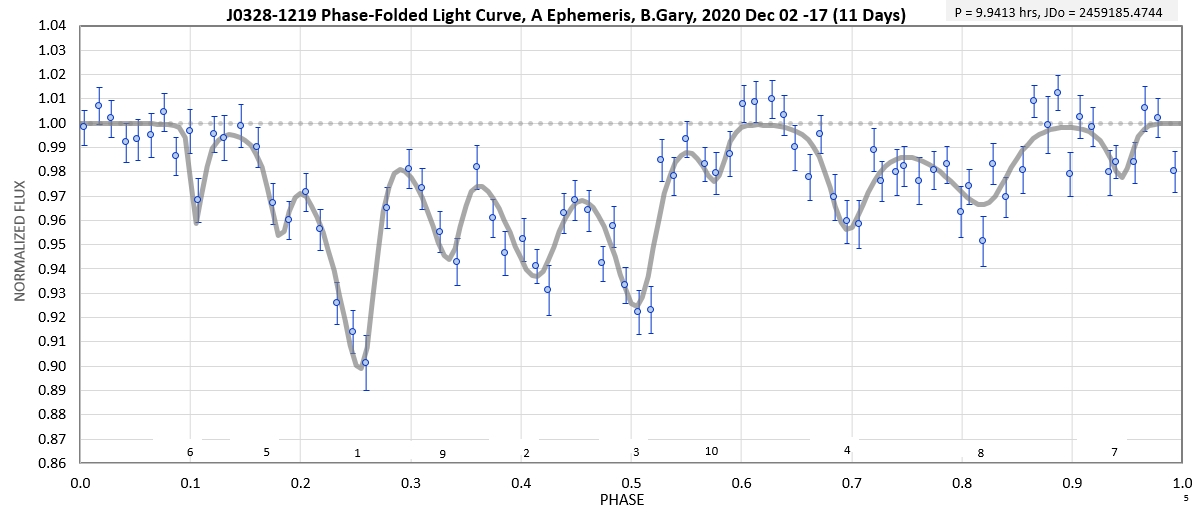
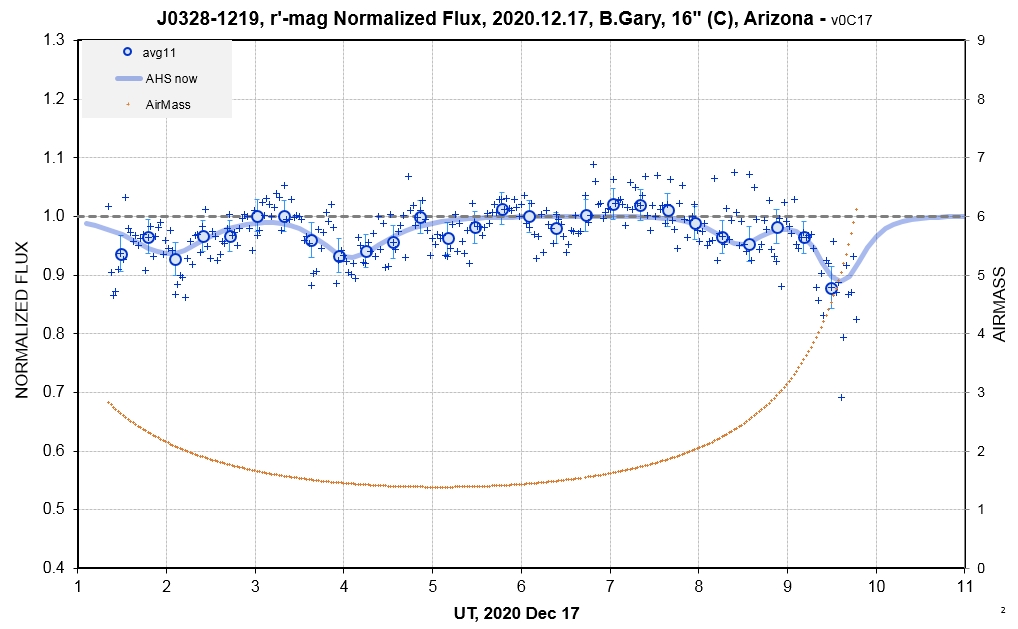
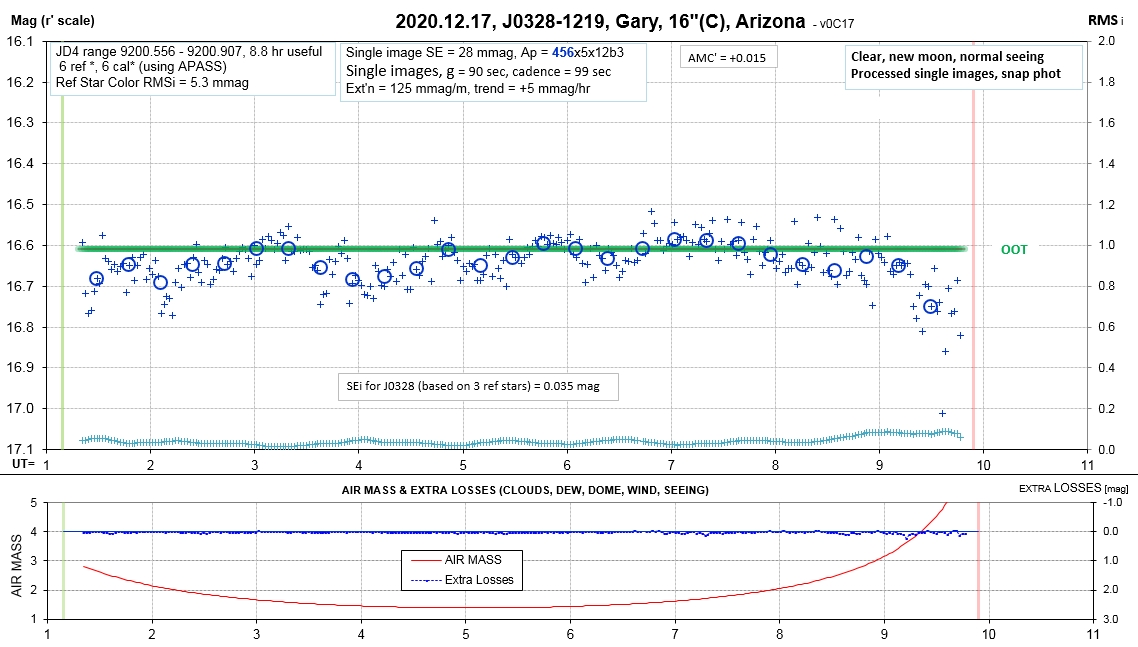
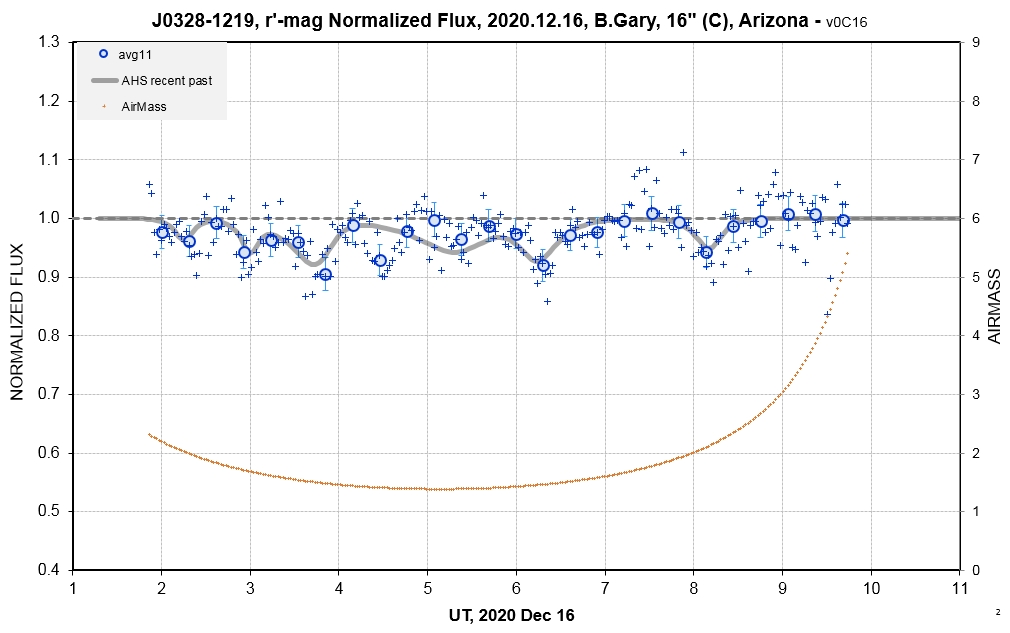
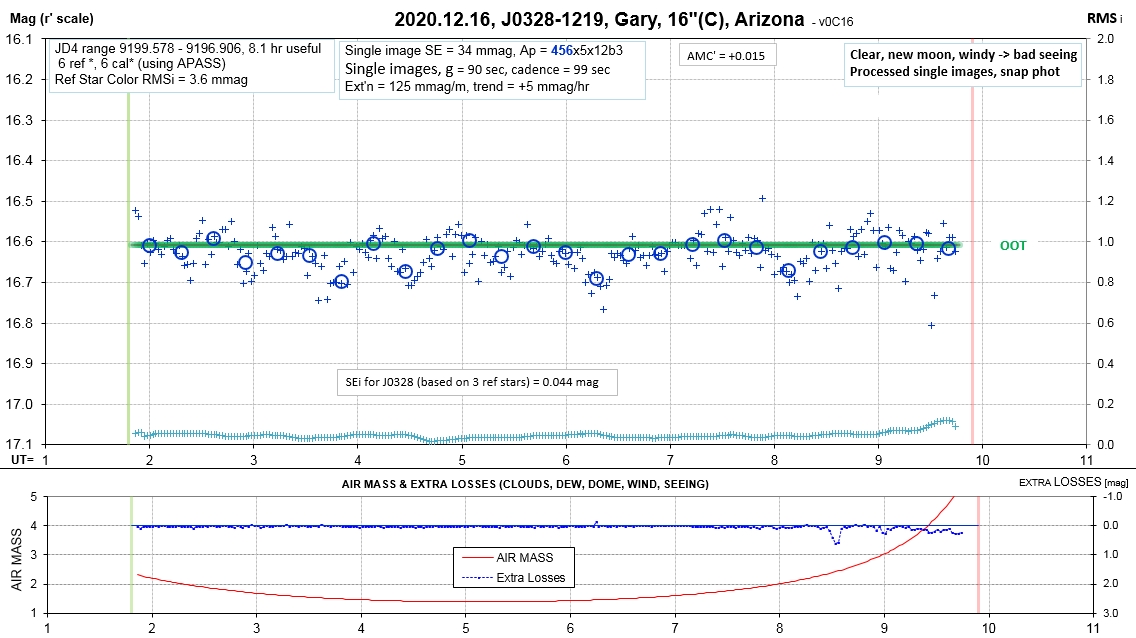
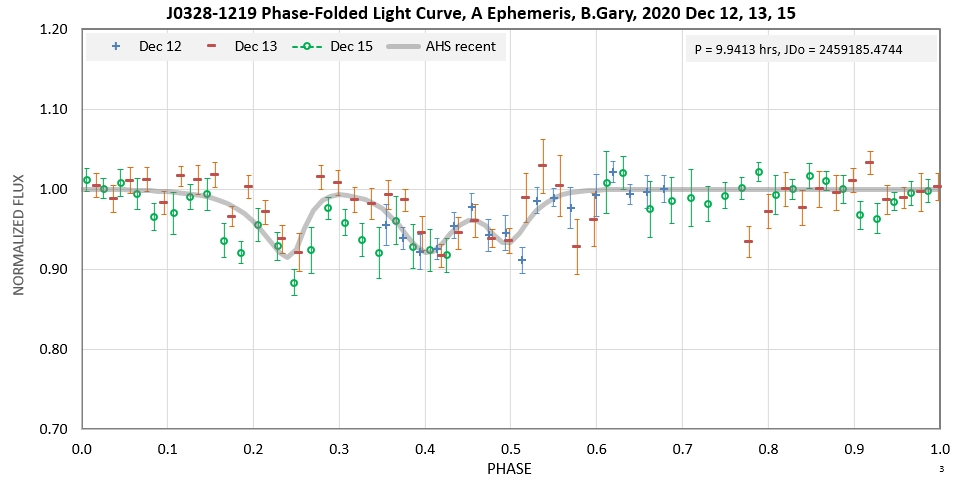
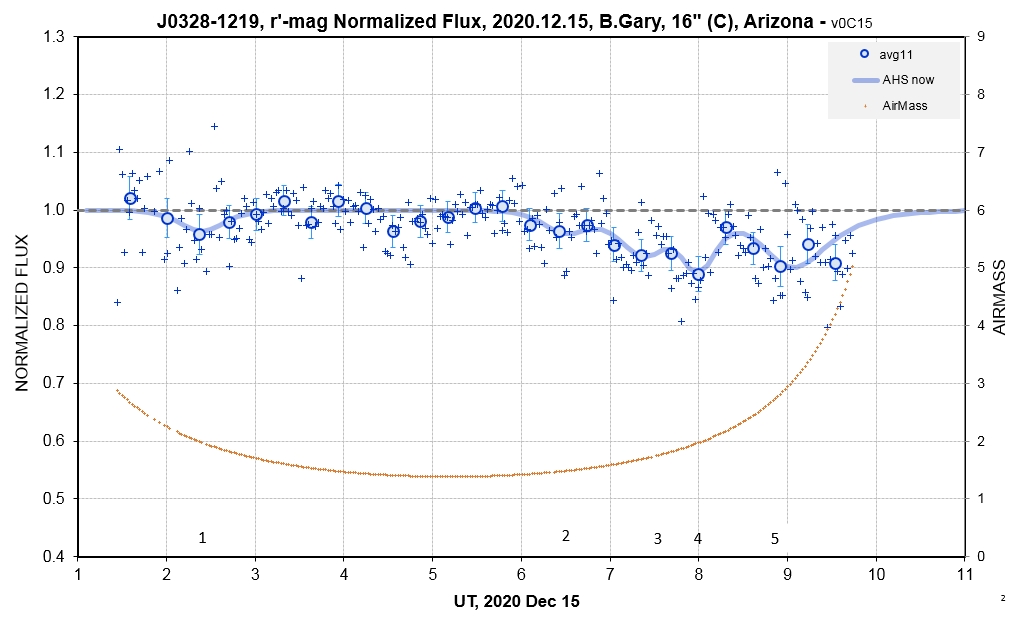
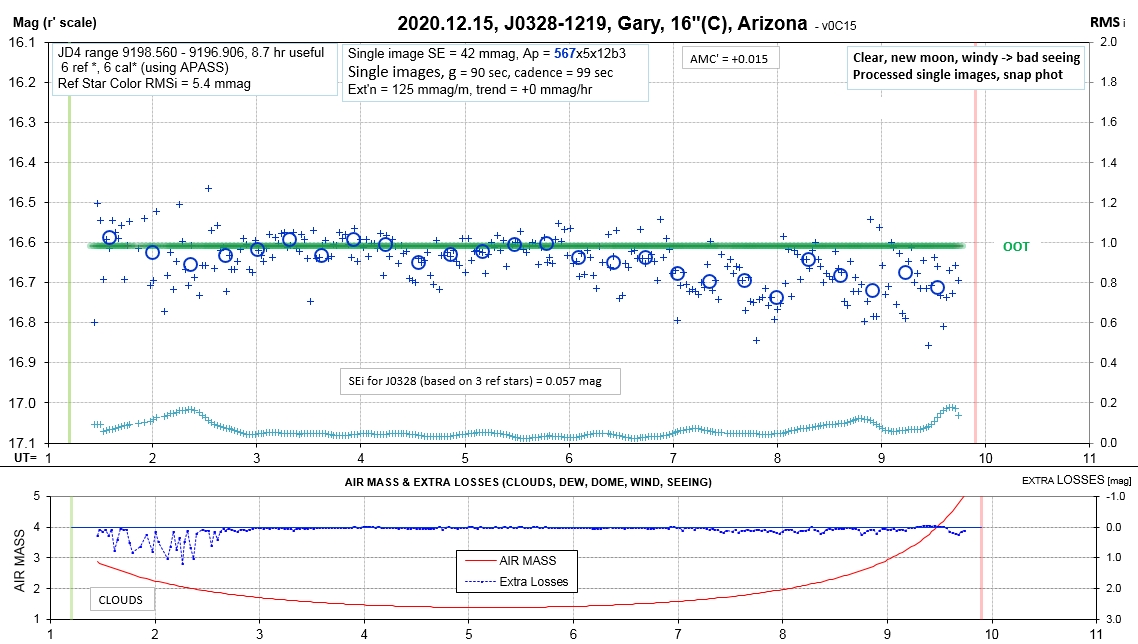
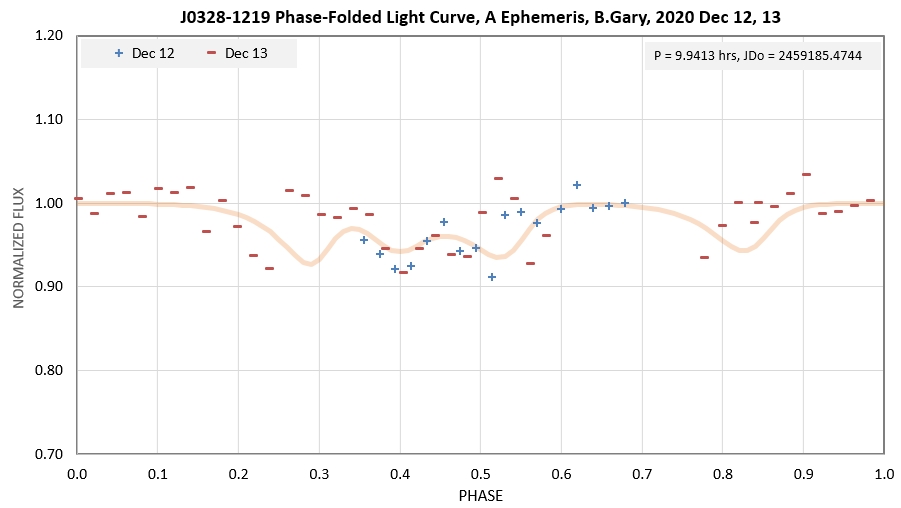
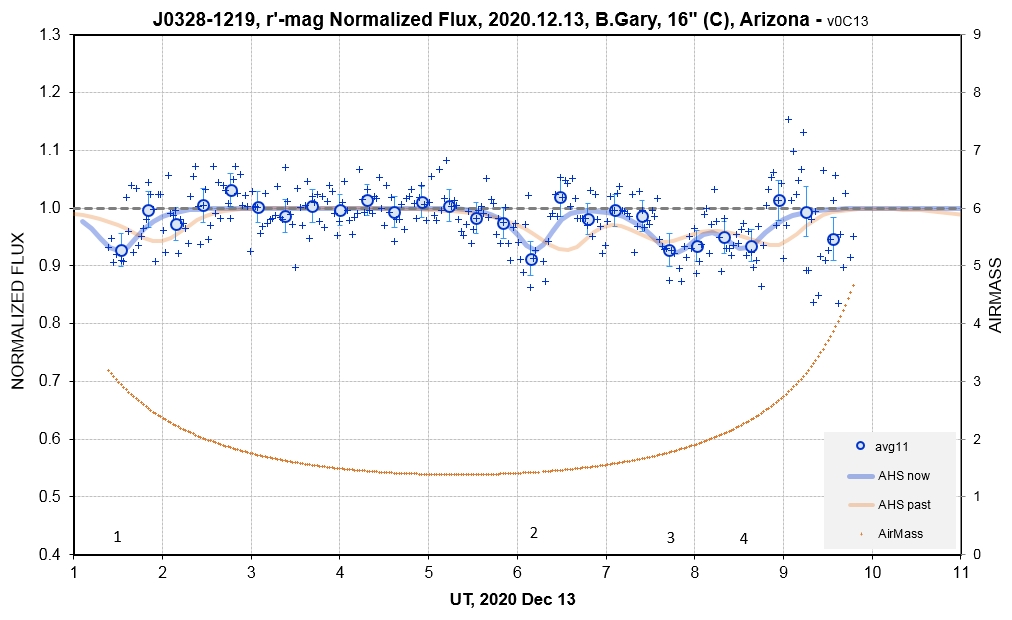
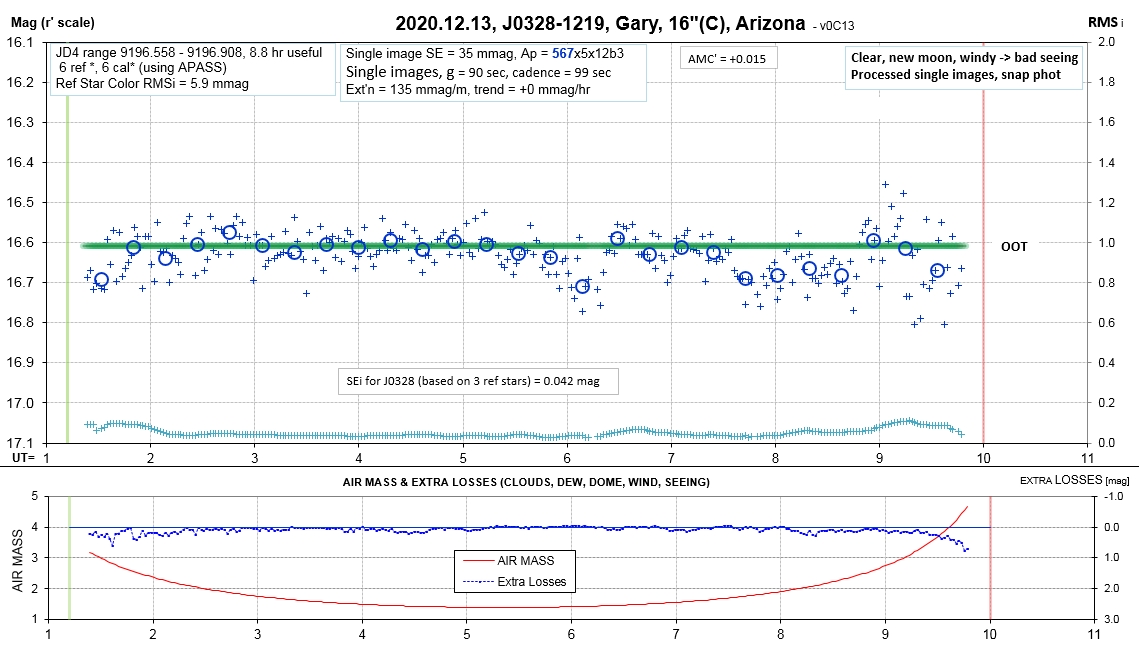
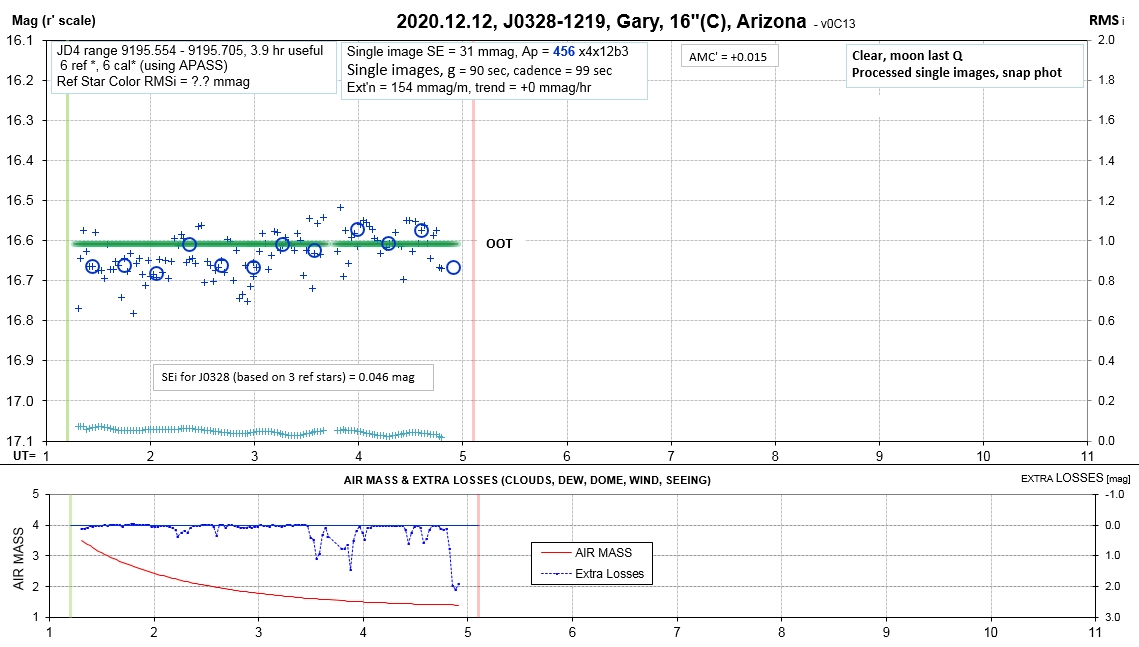
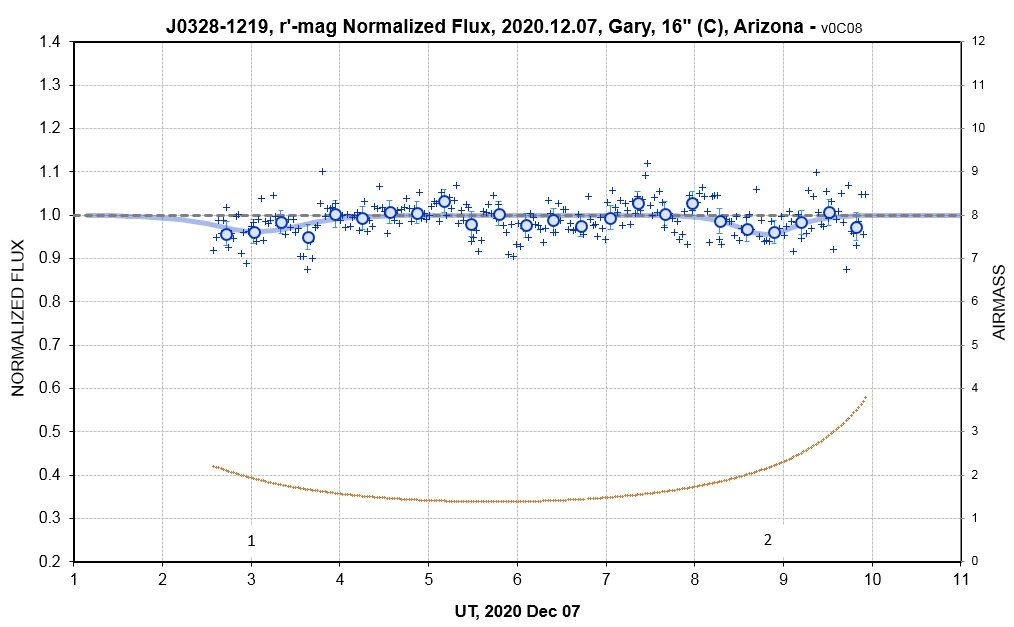
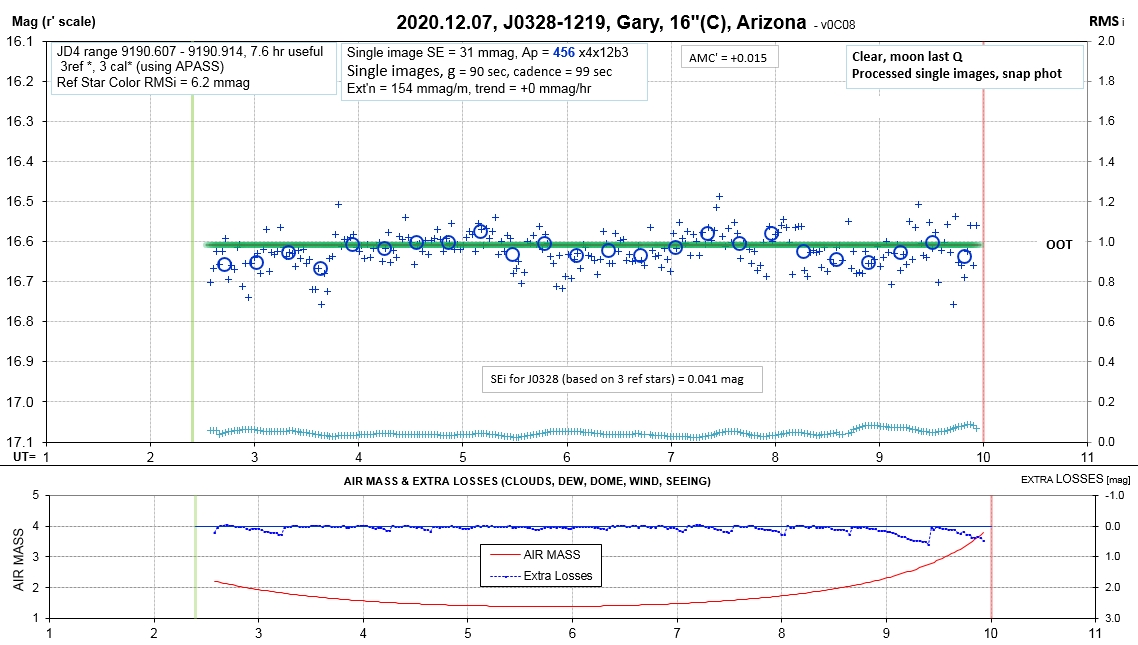
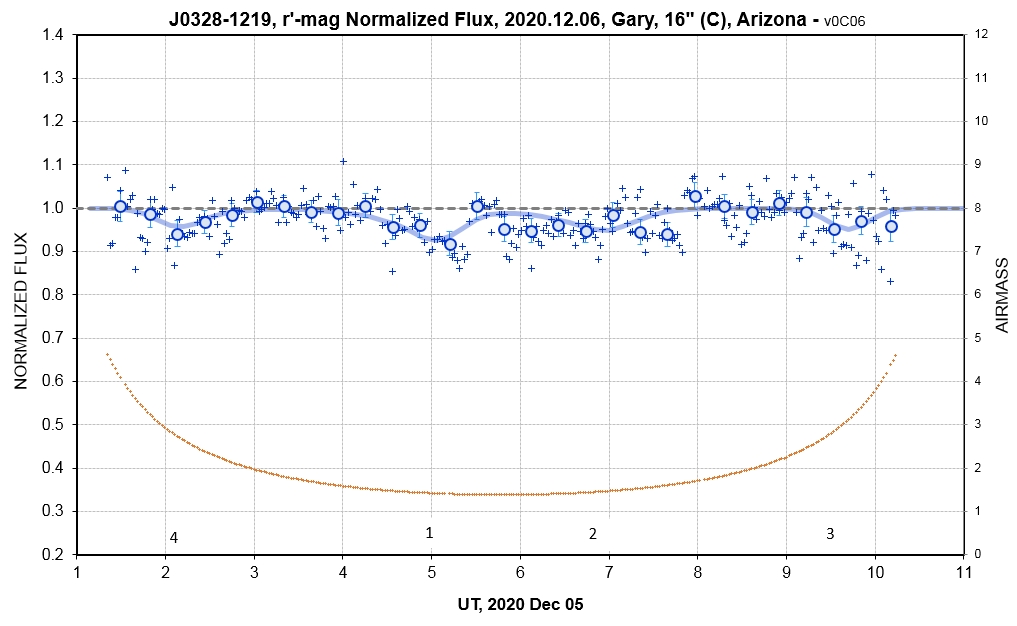
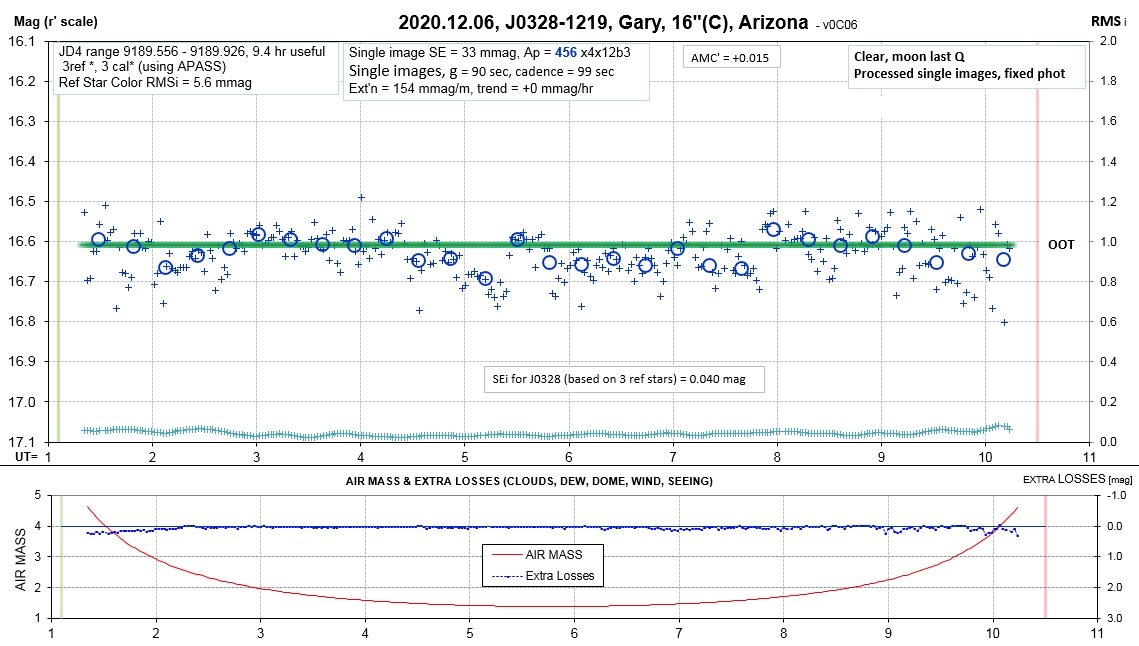
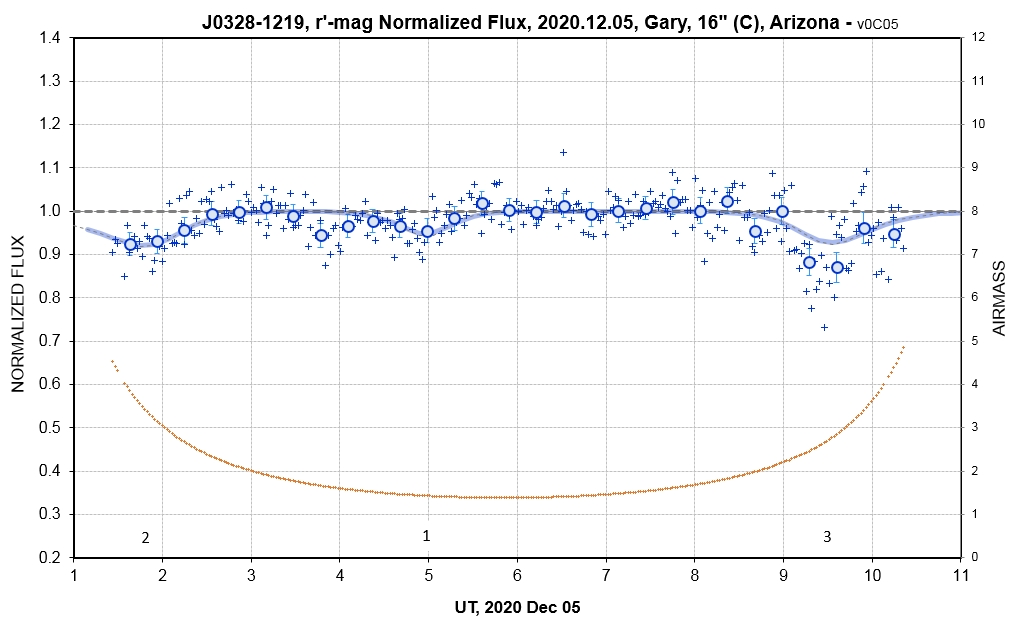

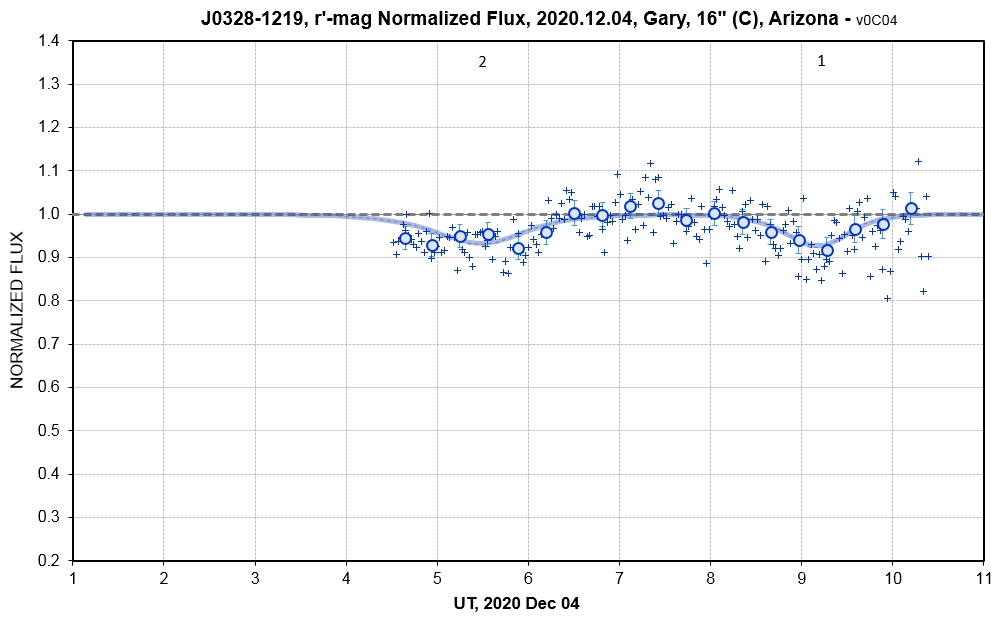
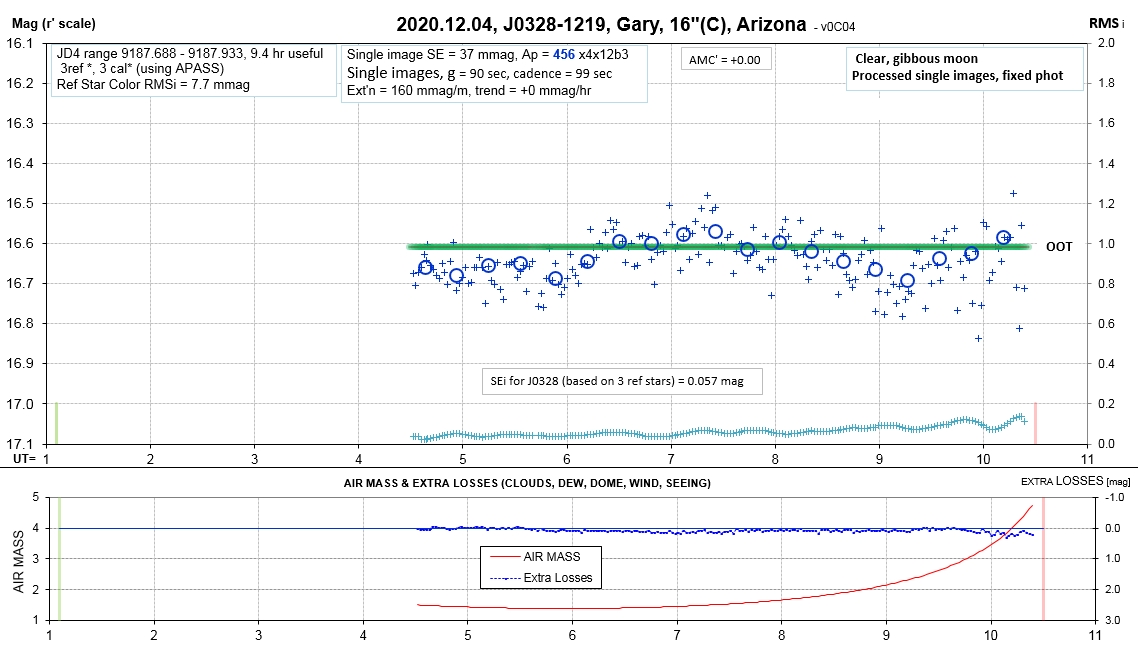
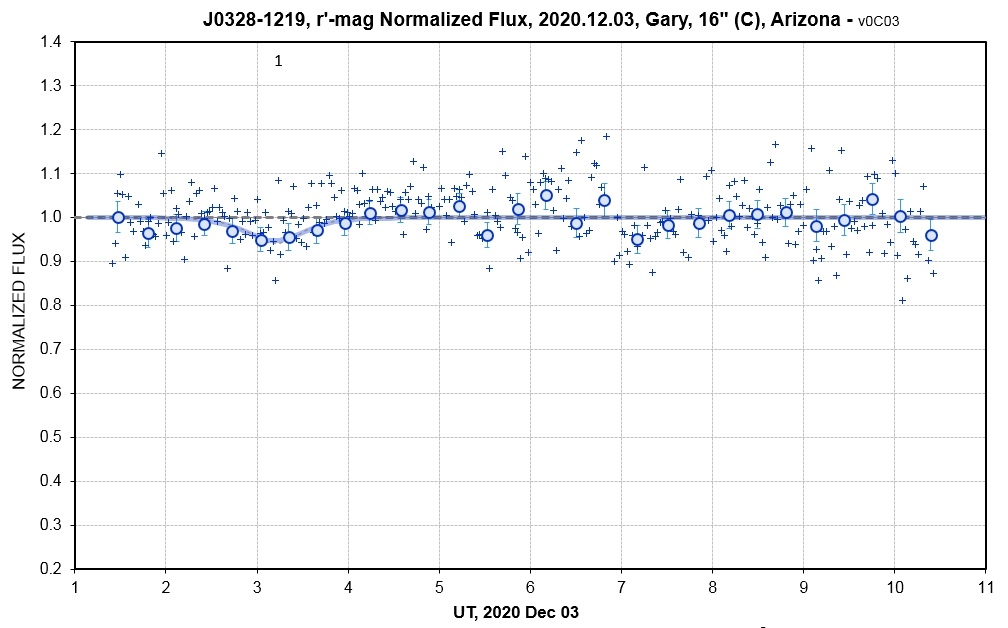
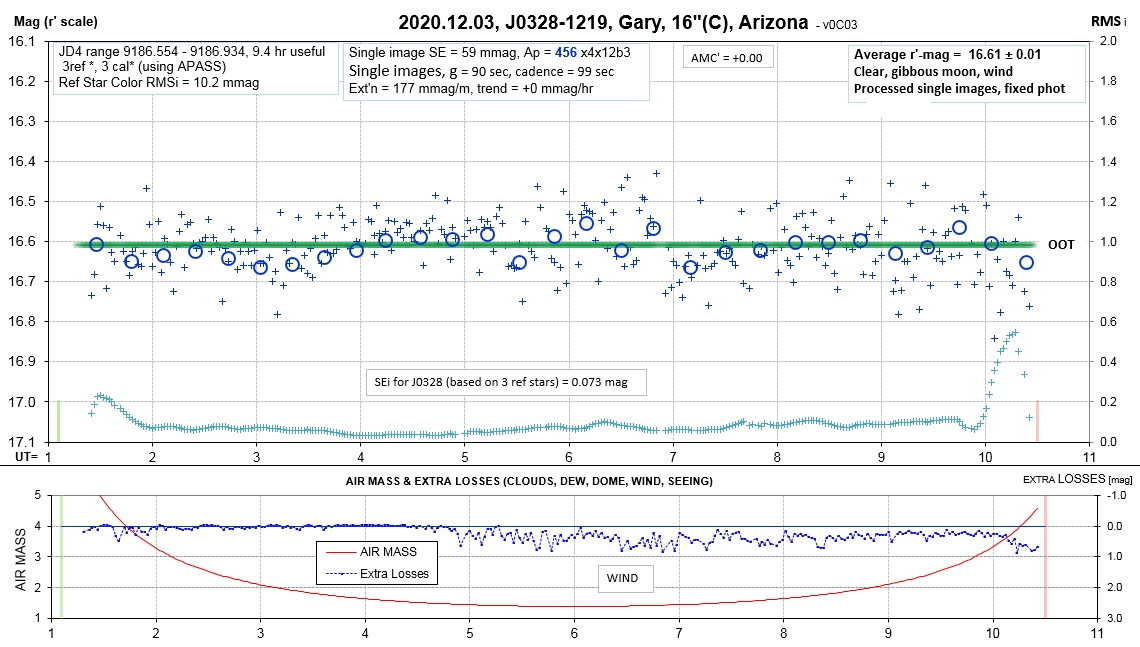

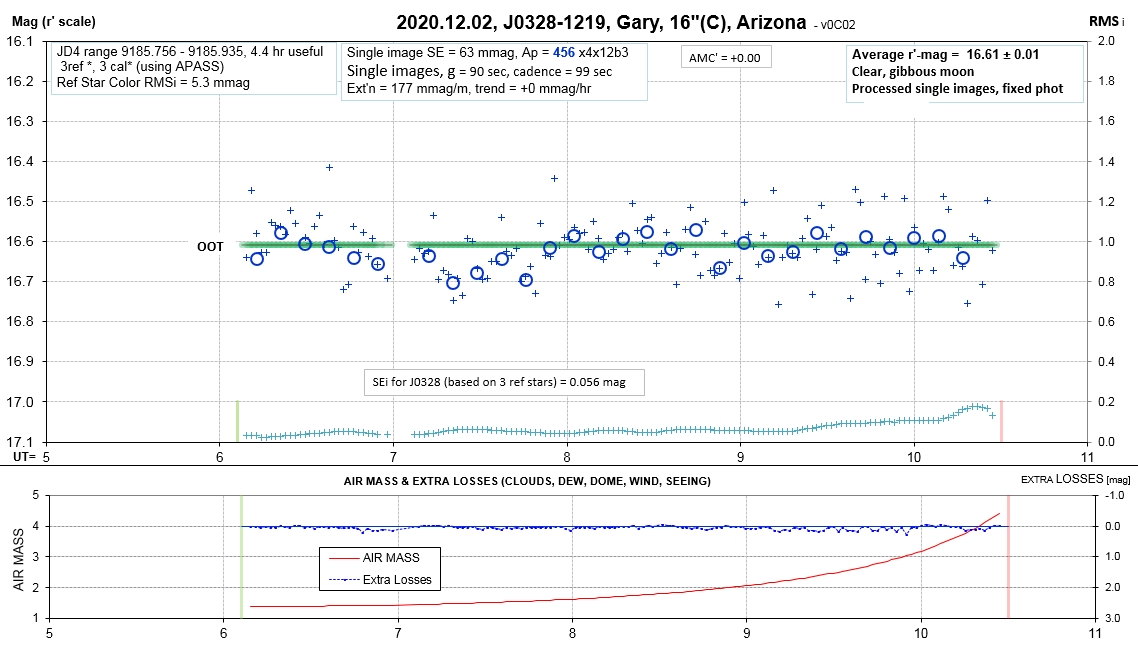
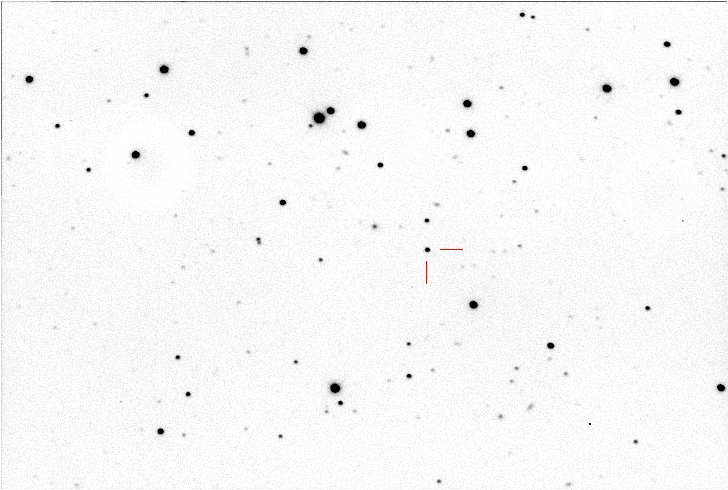
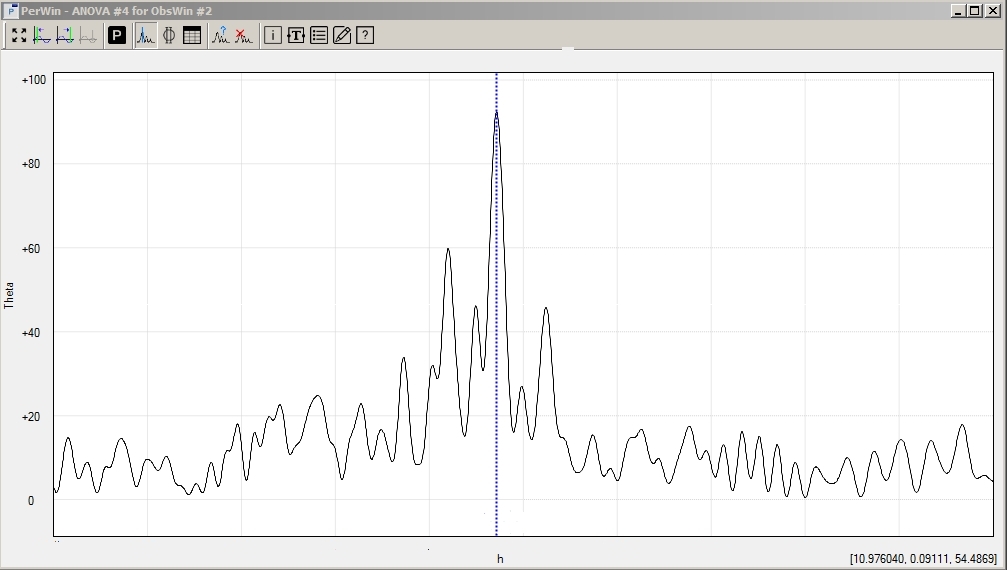
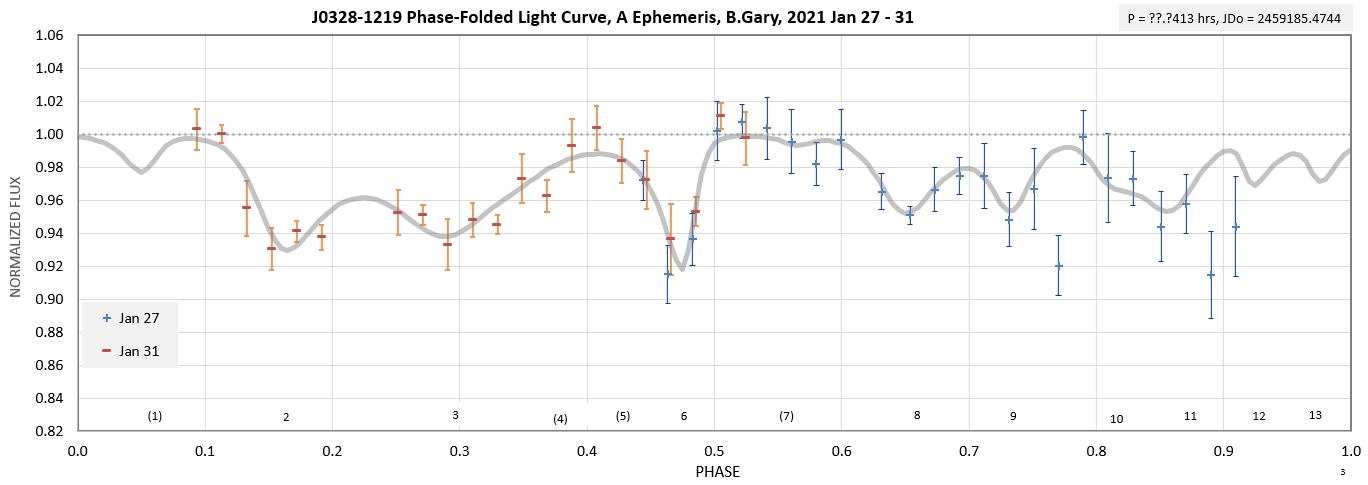

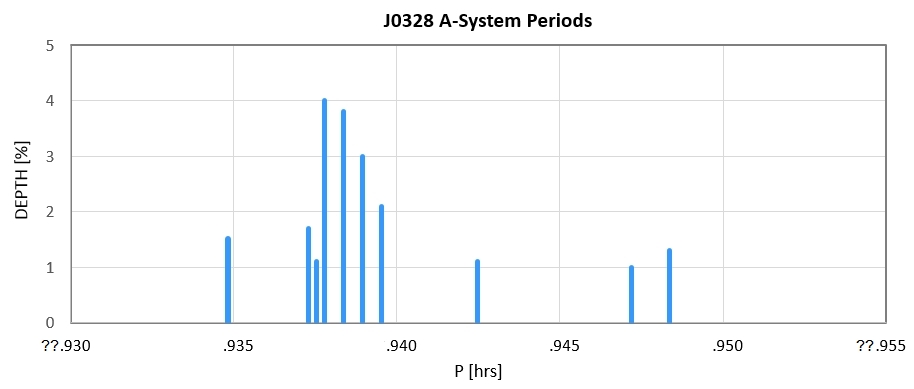
Starting here I will change my policy of hiding periodicity results. Why? Three reasons: 1) Anyone who is at least somewhat serious about astronomy will be able to determine J0328's periodicity by simply downloading my data exchange file for HAO data and processing it with a periodogram program, such as Peranso. 2) No one is viewing this web page anyway (just two viewings so far: someone from Austin and another from Ireland). 3) A paper in preparation by a group I used to be affiliated with is close to submission, and anyone else who theoretically could read this web page wouldn't be able to prepare and submit a competing paper before the aforementioned one.
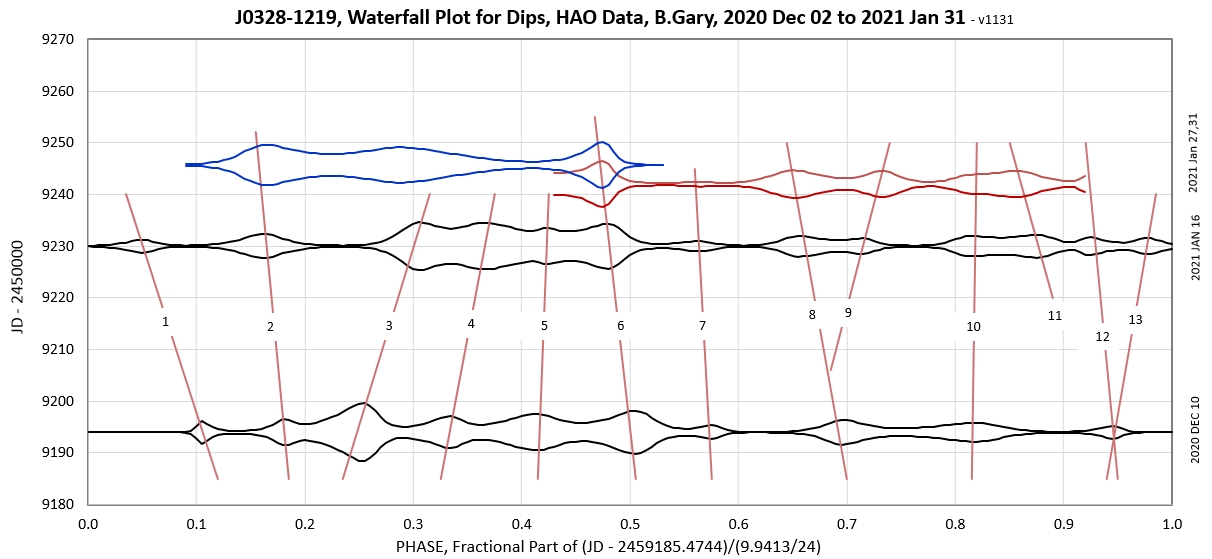
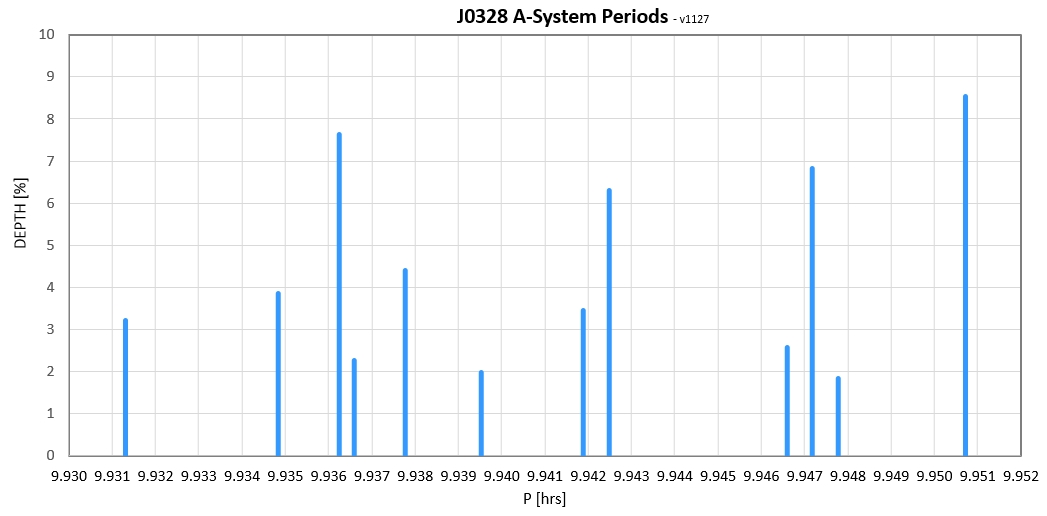
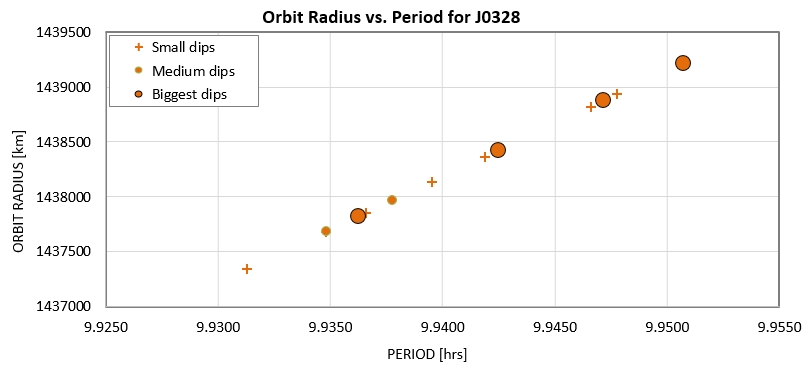
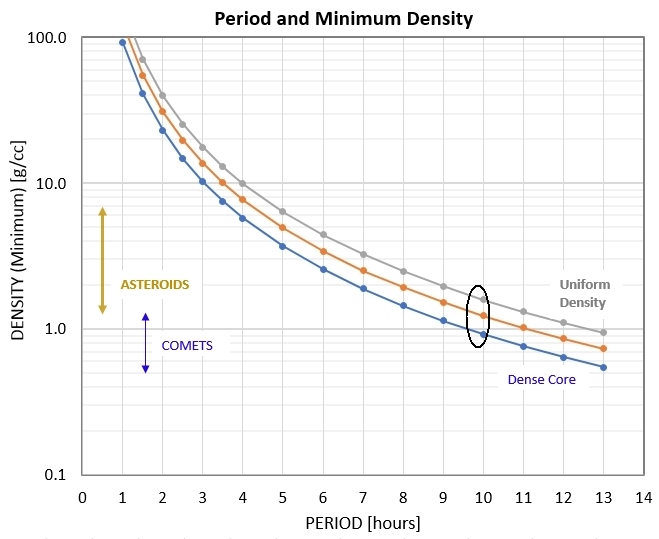
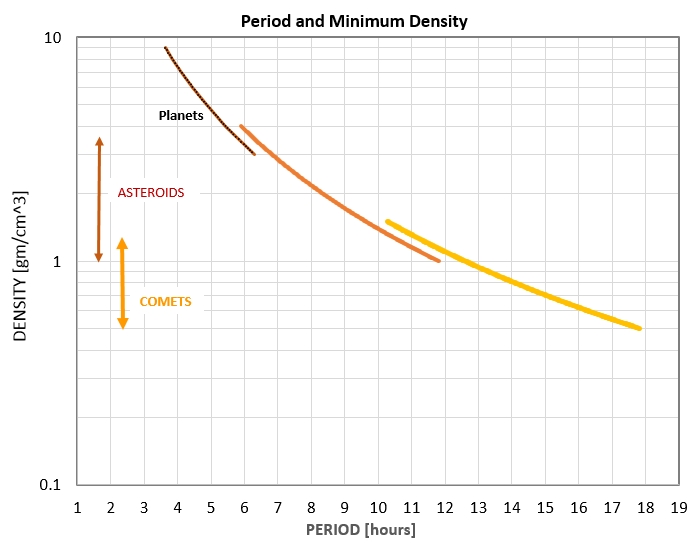
The
equation T = N * p* O * F states that the number of WDs
that are known to exhibit dust cloud transits (T) is
equal to the product of the number of WDs that have been
studied (N), the fraction of WDs with polluted
photospheres (p), the
fraction of polluted WDs that are oriented favorably for
our view of dust cloud transits (O) and the fraction of
the time that dust cloud transits are detectable for WDs
that are both polluted and oriented favorably (F).
These
are estimates of the knowable parameters and a solution
for F:
N = 5000 (Kepler and TESS)
T = 2 (WD1145 and J0328)
p = 35 ±
10 % (fraction of polluted WDs)
O = 1.2 ±
0.3 % (occurrence of "viewability" of transits for
random inclination)
F = 9.5 ±
7.2 % (fraction of time dust clouds produce detectable
transits)
The
meaning of F < 1 is that detectable dust cloud
production can vary on timescales shorter than the
settle times for elements in the WD photosphere that are
used to characterize pollution. The first timescale is
months to years while the second timescale is years to
millennia. WD1145 has so far been “active” for 6 years,
and J0328 has been active for 2 years.
The
parameter O deserves more discussion. Imagine that
WD1145 has dust clouds that are optically opaque bands
with a thickness to WD radius ratio = R. The 4.5-hour
period means that the orbit radius, a, to WD radius,
Rwd, is a/Rwd = 92. We can account for the observed
maximum depth of 60 % if R > 0.3 (and impact
parameter m < 0.2), for example. For larger m we
require larger R, so R = 0.3 is a minimum. The angle
departure from edge-on for transits to exist is 0.81 deg
(for R = 0.3). For larger R, such as 1.0 (i.e., width of
cloud band = twice diameter of WD), the angle for
transits = 1.25 deg. The occurrence probabilities for
viewability of transits (for random inclinations), which
is the parameter O, is 0.9 and 1.4 % for these two R
values.
This is why I have adopted an occurrence probability, O
= 1.2 ±
0.3 %.
If the "1 per 2500" summary holds up with more observations we should consider the possibility that a substantial proportion of WDs are polluted due to comets in far out orbits, with periods in the 10 to 18 hours region. This could account for the small number of known WDs showing dust cloud transits because the long period systems are less likely to be oriented for the transits to be viewable (smaller O). J0328 may be more typical of polluted WDs than WD1145, so.we should not be surprised if most future discoveries of WDs with dust cloud transits are more like J0328 than WD1145.
The probability of finding WDs that are variable due to dust cloud transits is 1 per 2500 ± 600, and that this incidence is dominated by the fact that WDs with tidally disrupting planetesimals (mostly comets and asteroids) are actively producing dust only 10 % of the time. Orbital periods may be found throughout the range 4 to 18 hours. The short period ones may be ~ 3 times more likely to be viewable than the long period ones due merely to orientation arguments.
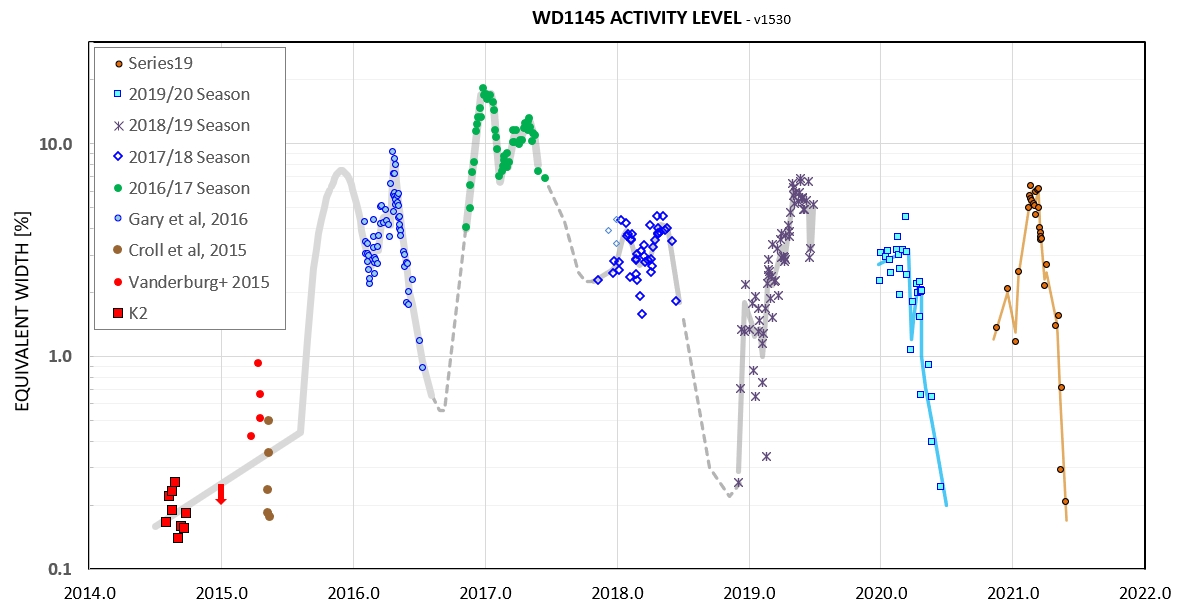
This site opened: 2020.12.04.